Anna Geiger's Blog, page 17
November 4, 2022
Books about place value
Looking for books that will help you teach place value? Try these!
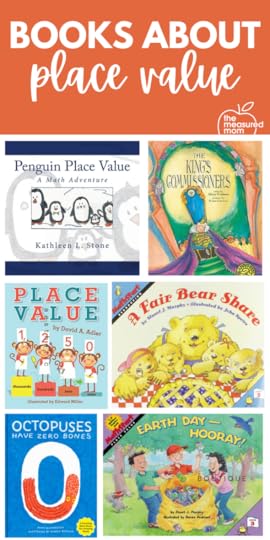
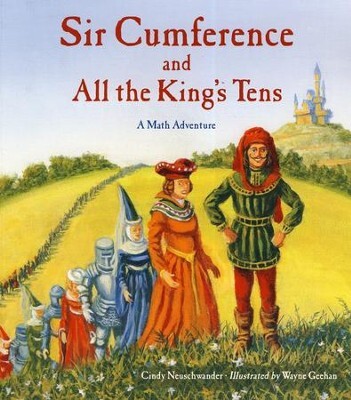
Sir Cumference and All the King’s Tens, by Cindy Neuschwander
In this clever book, Sir Cumference and Lady Di are planning a surprise birthday party for King Arthur, but so many guests have arrived that they can’t keep track of them. When the knight and lady count tens, hundreds, and thousands of partygoers, listeners will get a fun lesson in place value.
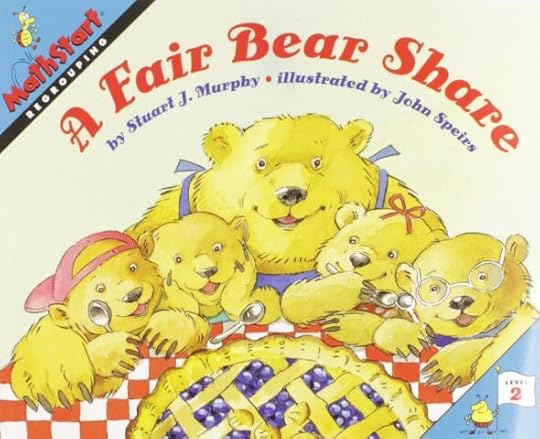
A Fair Bear Share, by Stuart J. Murphy
Stuart Murphy is brilliant at combining storytelling with math concepts! In this book, bear cubs are picking nuts and berries for a special dessert, but one little bear just wants to play. When the cubs count the nuts and berries by making piles of ten (and leftovers), it’s very clear that one little bear hasn’t done her part. In fact, there aren’t enough nuts and berries to make a pie. Finally the last bear does her share, and by making piles of tens and leftovers the cubs discover that they have just enough berries and nuts to make a delicious pie.
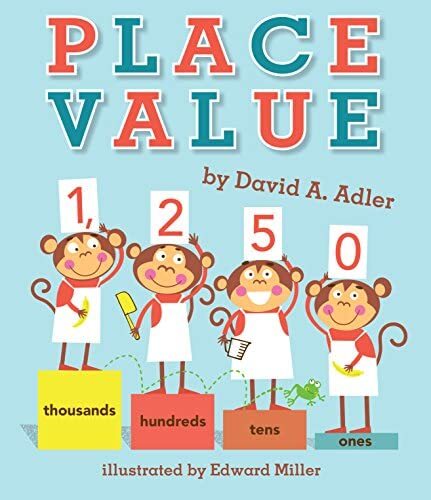
Place Value, by David A. Adler
Adler takes the complex subject of place value and explains it in a very straightforward way, alongside vibrant illustrations of busy monkeys. Truthfully, this book helped me understand place value better. It’s a must-read for you and your students!
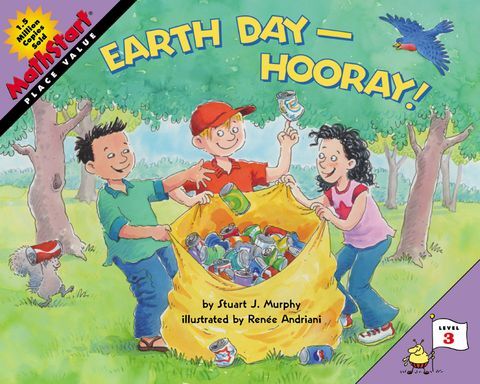
Earth Day – Hooray! by Stuart J. Murphy
A group of kids lead an effort to clean up local parks with a soda can drive. They sort the cans that they collect into bags of ten and then 100. Eventually they make bags of 1000, having collected 5,026 total cans. Highly recommended!
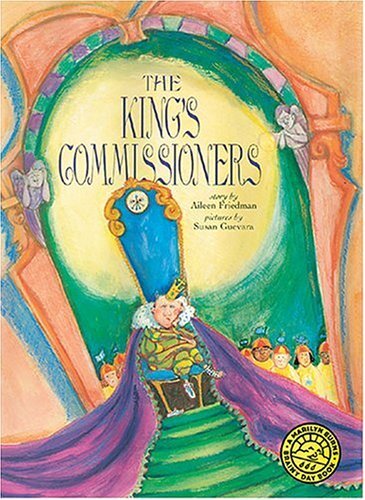
The King’s Commissioners, by Aileen Freedman
This story is a little long, but eventually we get to the math lesson when the king has his assistants count all his royal commissioners. Each assistant counts in a different way – in 2’s, 5’s, and finally 10’s. I love that this book will help kids think about numbers in different ways.
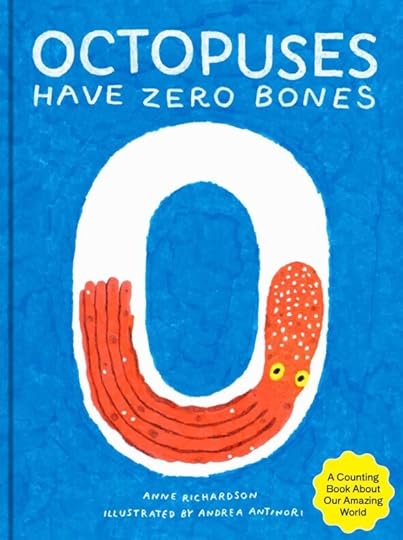
Octopuses Have Zero Bones, by Anne Richardson
This beautiful, fascinating book about the world describes our system of numerals and applies them to the world. “Hummingbirds lay TWO eggs. Now let’s try placing two zeros after the two. Bowhead whales can live more than TWO HUNDRED years.” The author and illustrator teach fascinating facts as they help kids think about the powers of ten. This book is absolutely brilliant and makes a great read aloud for young and old listeners alike!
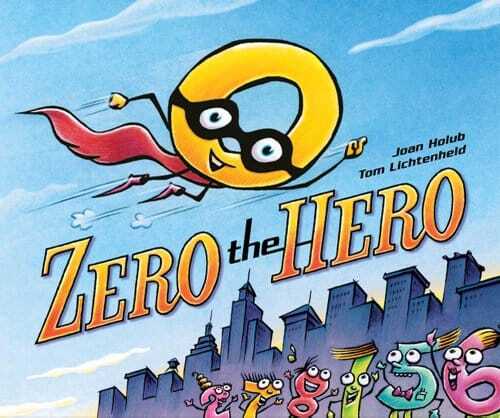
Zero the Hero, by Joan Holub & Tom Lichtenheld
This book is hilarious and worth reading even if you aren’t teaching place value. Zero feels worthless. He doesn’t add anything in addition. You can’t use him in division. And he makes numbers disappear when he multiplies. Zero runs away, leaving the numbers realizing just how important he truly is. In the end, he saves the day by multiplying himself by the Roman Numeral invaders and making them disappear. You’ll have to work a bit to make the place value connection, but this book is worth the effort.
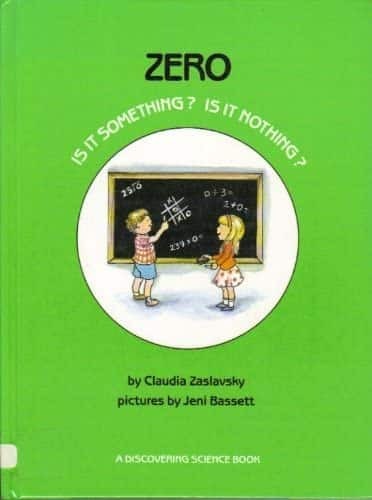
Zero: Is it Something? Is it Nothing? by Claudia Zaslavsky
This vintage book (1989) helps students think about the different uses of zero. Sometimes, zero is nothing. But zero can also mean something – as in the number 250, or the number 305. From Tic-Tac-Toe to rounding, this book covers every possible use for zero. I recommend reading just a section at a time and returning to the book often.
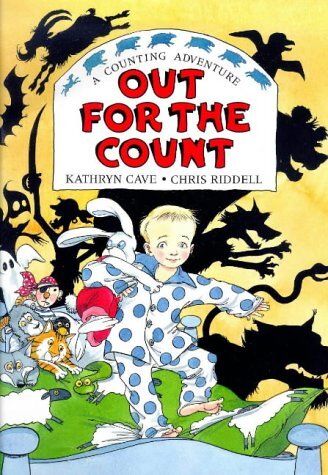
Out for the Count, by Kathryn Cave
This book (published in 1991) is a little hard to find, but it’s worth tracking down. Tom can’t sleep, so his father suggests counting sheep. Soon the sheep lead Tom into the wild where he meets more creatures that he can count by tens and ones. It’s a fantastic introduction to place value!
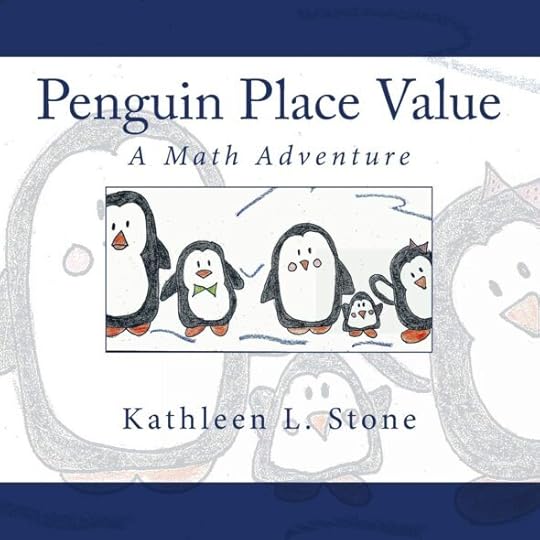
Penguin Place Value, by Kathleen L. Stone
The penguins catch fish and store them in boxes of ten, plus leftovers. This simple little book is ideal for introducing place value to young listeners. It’s immediately obvious that this book was written by an experienced teacher; the end of the book even includes suggestions for games to enhance learning!
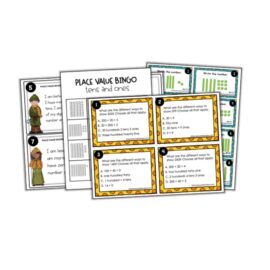
Looking for place value resources?
Our low-cost membership includes thousands of printables for teaching math and literacy concepts in PreK – third grade, including a fantastic variety of low-prep activities for teaching place value. CLICK HERE TO LEARN MORE
The post Books about place value appeared first on The Measured Mom.
November 3, 2022
5 Reasons you’ll LOVE Just Right Reader decodable books!
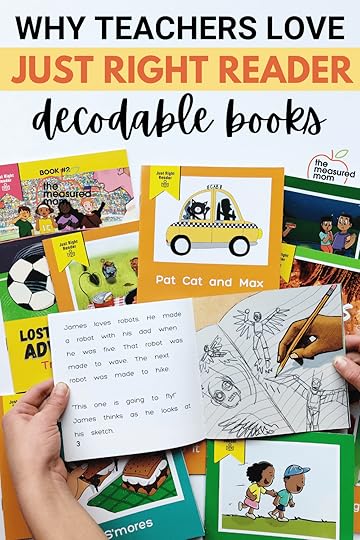
Disclosure: This blog post is sponsored by Just Right Reader. All opinions are my own. I only promote products I know and love!
Are you looking for decodable books to fill your classroom library? You can’t go wrong with Just Right Reader!
When Just Right Reader asked to sponsor this blog post, I jumped at the chance. That’s because their giant collection of over 300 books is one every primary teacher and reading interventionist will love!
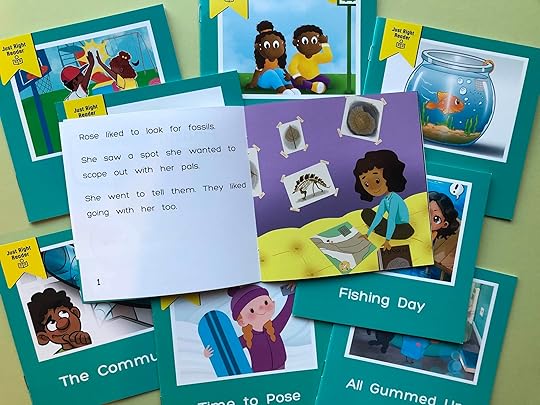
Sara Rich, an experienced educator (and former school principal!) has always been passionate about teaching reading. In fact, she received San Francisco Mayor’s Principal of the Year award after she helped schools raise reading achievement levels.
When Sara’s own daughter struggled to read, Sara saw the need for more fun and engaging decodable books.
She recruited a team of reading experts and phonics leaders to help create decodables that students and teachers would love … and the rest is history!
 5 reasons teachers and school districts LOVE Just Right Reader Decodable Books1 – Just Right Reader has an enormous collection of decodable books for Pre-K to third grade.
5 reasons teachers and school districts LOVE Just Right Reader Decodable Books1 – Just Right Reader has an enormous collection of decodable books for Pre-K to third grade.Never run out of decodables again!
The Pre-K library includes 62 titles and teaches letter recognition and phonemic awareness. The Kindergarten library includes 50 titles and features CVC words. The First Grade library includes 110 titles and features digraphs, beginning blends, ending blends, final e, and r-controlled vowels. The Second Grade library includes 90 titles and features vowel teams, multi-consonant sounds, and final stable syllables.2 – The books are at least 80% decodable.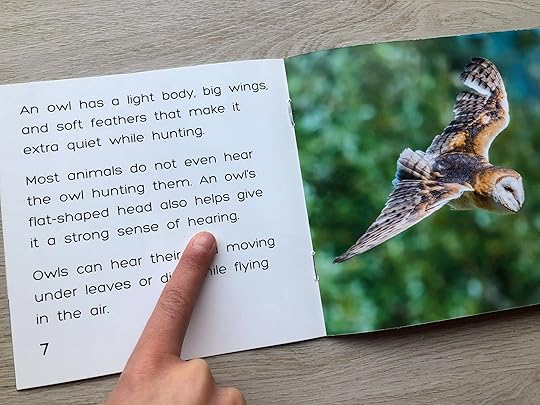
If you’ve ever picked up a “decodable” book and found that it contains far too many words with phonics patterns you haven’t taught yet … you know how frustrating that can be for students!
Just Right Reader has you covered. It follows a solid scope and sequence; its books primarily feature words with sound-spelling relationships that have been previously taught. The books also include high frequency words so that the sentences sound the way we speak (whew – no stilted language structures here!).
3- The books are high quality and feature a variety of engaging illustrations with diverse characters.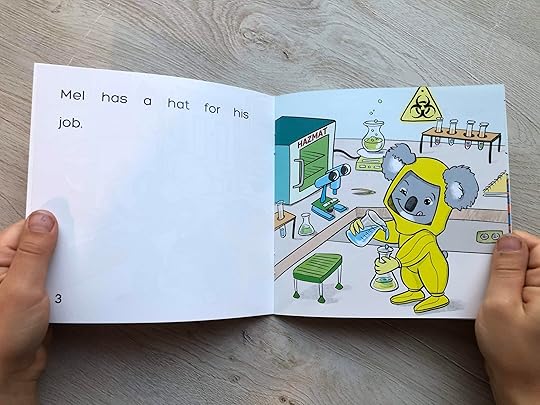
Decodable passages have their place, but there’s nothing like having a real book in your hands. These are solid, sturdy little books with words on the left and full color pictures on the right.
You and your students will enjoy the variety in the illustrations – since many different illustrators work for Just Right Reader, there are many different styles to enjoy!
4 – Teaching tips and a QR code to a phonics lessons are included with each book.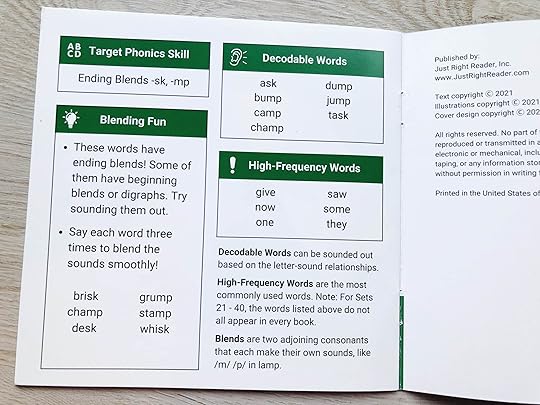
The front of each book names the featured sound-spelling. The back pages repeat the target skill, provide extra words to sound out, and list the words featured in the book.
This is a fantastic reference for both teachers and parents — making Just Right Reader decodables the perfect choice for at-home reading.
Bonus! Each book has QR code with a link to a phonics lesson that goes with each decodable!
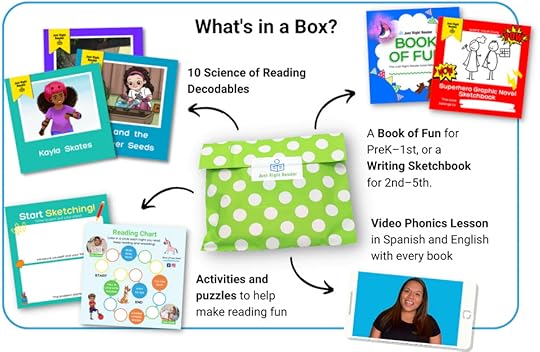
Just Right Reader even sells Take-Home Decodable Boxes: students get personalized-to-their-phonics-level packs of decodables to take home and keep. Parents can use the QR code on the back of each book to access the phonics lessons and reinforce what’s being taught in the classroom!
5 – Just Right Reader also sells Decodable Plus books featuring both fiction and nonfiction chapter books.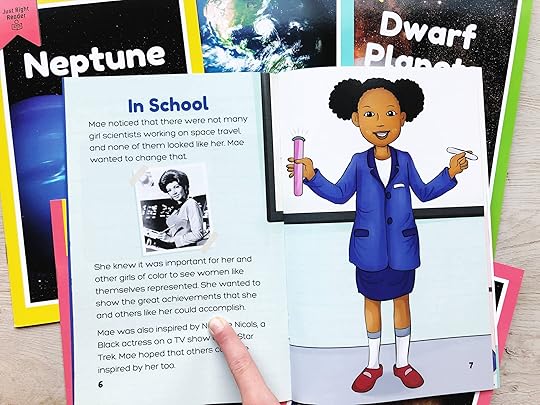
The Decodables Plus books are geared for emerging readers in third to fifth grade who are behind in reading but don’t want to read “babyish” books. The Decodable Plus library currently includes a series about planets (which includes the biography of Mae Jamison pictured above), animals of the Everglades, dangerous places, the Lost River Camp Adventure Series, and the Next-Door Detective Agency series.
And here’s something else to love …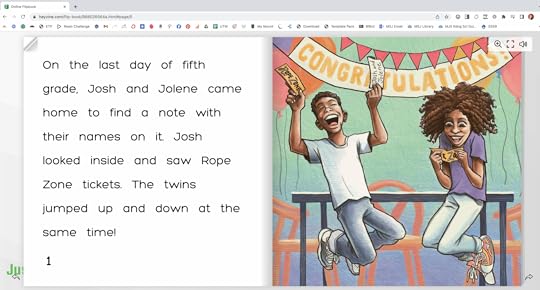
Just Right Reader has a free e-library featuring 60 books that you can read online for FREE! These are online flip books that will let you “try before you buy.” (And trust me … you’ll be hooked!)
Ready to get started?Head to Just Right Reader’s shop where you can purchase, create a purchase order, or request a quote.
Have fun exploring!
The post 5 Reasons you’ll LOVE Just Right Reader decodable books! appeared first on The Measured Mom.
October 31, 2022
What does research tell us about reading fluency? A conversation with Dr. Tim Rasinski
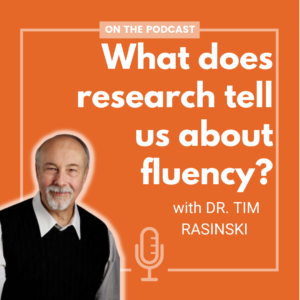
��
TRT Podcast #99: What does research tell us about reading fluency? A conversation with Dr. Tim Rasinski
Dr. Tim Rasinski is an educator, researcher, writer, and director of an award-winning reading clinic. Today he shares what the research tells us about reading fluency – and how to apply this knowledge in artful ways.
Listen to the episode here
��
Full episode transcript
Transcript
Download
New Tab
Hello! In today's episode, I had the honor of speaking with Dr. Tim Rasinski. If you know anything about reading fluency, you have probably read something that he's written.
He is a professor of education at Kent State University and directs its award-winning reading clinic. He's written over two hundred articles and has authored, co-authored, or edited over fifty books or curriculum programs. In addition, his research on reading has been cited by the National Reading Panel and has been published in many journals. But more than that, Dr. Rasinski is about the art of teaching, not just about the science, but how to apply it in artful ways. We'll get started right after the intro.
Anna Geiger: Welcome, everybody! Today I'm very excited and honored to be interviewing Dr. Tim Rasinski. If you know anything about reading fluency, you've heard of him and probably read at least one of his books. He has been in education for years, given us lots of articles and books and webinars. Today, he's going to talk to us about reading fluency and what we can learn from the research. Welcome!
Tim Rasinksi: Hi, Anna! Glad to be with you. Thanks for setting this up!
Anna Geiger: Can you talk to us a little bit about how you got into education, and then what led you into studying fluency, and then where you're at today?
Tim Rasinksi: Oh boy, that's a long story because I've been at it for a while.
Actually, my college degree is in economics. I had this aspiration to be a, I guess, a businessman, a banker, something like that. But at the time I was in the service, and when I got out of the service I worked in a bank for a while, and I had friends who kept telling me, "You know, you work with kids pretty well. Why don't you think about being a teacher?"
Well, I come from a family of teachers, and I know how hard they work, and I said, "I don't want to work that hard!"
But nevertheless, that's what happened. So I used the GI Bill to become a teacher outside of Omaha, Nebraska. I taught elementary, the middle grades, and was a reading specialist for several years.
Actually it was there that my interest in fluency was developed. I was working as a Title I reading interventionist, and I'm working with these kids who, by definition, are having difficulty with reading, and I'm doing everything that the book tells me to do. I'm working on phonics and phonemic awareness and vocabulary and reading comprehension. Most of the kids I was working with did pretty well, but there were some that I just couldn't budge off the dime.
Fortunately for me, I was working on my master's degree at the University of Nebraska at Omaha. So if there's any Mavericks out there, it's a shout out to you guys. But the professors had us reading some of these articles that were just beginning to appear on reading fluency.
I'm not even sure I knew what fluency was at the time, but I read these articles. One was called "The Method of Repeated Readings" by Dr. Jay Samuels from the University of Minnesota, another one by Carol Chomsky, "After Decoding: What?" After you teach kids to decode words, but they're still not making any progress, her answer was reading fluency. So I read these, as well as Dick Allington's piece, "Fluency: The Neglected Reading Goal."
Anyways, what happened was I said, "Okay, well, I'll give this a try," and I tried out repeated readings and assisted reading with the students I was working with, and, lo and behold, they began to make progress. In some cases, it was pretty breathtaking. In other cases, it was more muted, but it was there.
And so I jumped on that bandwagon, started my PhD work at Ohio State, and met up with my advisor, Jerry Zutell, who also had an interest in reading fluency. We've worked together over the years, but that's how it got started, actually, as a very practical problem, working with kids who are having some difficulty in reading.
So I got on it forty-plus years ago, and I'm still at it. I'm still trying to discover more things about fluency and why it's important.
Now I do research. We just did a study that got published in the Journal of Adolescent & Adult Literacy about fluency in adults.
But what I really see myself as is a person who bridges research into practice. I think we have a huge need for that in our field. It's one thing to have the basic research into literacy, but then how do you actually apply that in the classroom? That's what I call the art. We're in this age now of the science of reading, but there's also an art of reading as well. It's that blend. That's where I kind of see myself positioned, not only my own research, but the research by other people, and trying to translate that for teachers who are in the trenches.
Anna Geiger: Yes, that is extremely appreciated. I think a lot of teachers, myself in the past included, see researchers and they think, "Well, what do they know? They've never been a teacher." For people to hear that many researchers were actually in the classroom, and still have a foot in the classroom, is good. And especially, we appreciate the bridging, too, because for teachers, reading those big, complex articles may not be what they want to do after a long day in the classroom.
Tim Rasinksi: Right. And in many cases, the research that we do is under such controlled circumstances, that it doesn't even begin to approach what teachers find in the classroom. So we need that, those folks who bridge both positions and try to translate that for teachers, because you're right, many teachers just don't have the time to dig into those 30, 40-page studies. And so it's up to me and my colleagues like me to kind of pull out those nuggets and talk about, "This is the way it can be done." And I think we need more of those folks.
Anna Geiger: Yeah, for sure. Speaking of those nuggets, what would you say, for the average teacher, what are the big takeaways from research for teaching reading fluency in the classroom?
Tim Rasinksi: Boy, I could go on that this one for quite a while.
First of all, the idea that reading fluency is not a uni-dimensional construct. It's actually made up of two subcompetencies. One, everybody knows about, we call it automaticity in word recognition. It's the ability to recognize words so automatically that when a reader is reading, they're not really paying all that much attention to the words. They're recognizing those words automatically, and so all their mental attention can be devoted to where it really matters: comprehension.
I teach a course here at the university on phonics, and one of the first things I tell my students is, "The goal of phonics instruction is to get students not to use phonics."
Anna Geiger: Yes.
Tim Rasinksi: As adults, we don't use phonics hardly ever, maybe once in a while, but most of the words we encounter are basically sight words. They're up there in our heads, and it's just a matter of seeing the word and instantly accessing it, not only the sound, but the meaning, and then applying it to comprehension. So that's one thing. Most people know about that because they're familiar with the way we measure automaticity, it's usually the speed of reading. How many words per minute can you read correctly?
But there's this other part. I often call fluency a bridge between word study and comprehension. Automaticity is part of that bridge that links to word study. But the other part that links to comprehension is what we call prosody, or I would prefer to call it expression.
If I think about somebody who's a fluent reader, it's not somebody who reads fast, but it's somebody who uses their voice to make meaning. They get loud and soft and fast and slow. They have dramatic pauses. They phrase the text into meaningful units. We know that that's a big part of fluency as well. What the research is pretty clear on is this: students that read orally with good expression, when they read silently they tend to be our best comprehenders. And this is across all grade levels.
The National Assessment of Educational Progress, again, getting back into the basic research, in 2019 they did a study on that with fourth graders. They found that there is a relationship, kids that read with greater expression, enthusiasm, even joy, if you will, they tended to be better comprehenders as well. So it's both of those things.
What happens is sometimes we get overly focused on that automaticity part, that the expression part gets neglected.
I was just chatting with a teacher earlier today and yesterday about this where her school has a goal for all kids in her grade level, I think it was third grade, to read at a particular speed at different points in the year, and the kids are actually graded on speed. She was kind of concerned about that because how can I develop prosody if I'm trying to get my kids to read as fast as possible?
You can't. I mean, when you're focused on speed, the rest of it goes by the wayside, even the comprehension part. I'm just trying to go from part A to part B. I have a friend, Chase Young, who calls this NASCAR reading.
We had a couple kids in our reading clinic just a few months ago, second graders, that came to us because they were experiencing difficulty. And so what we do is we have them read a couple of passages for us, and of course we try to analyze what's going on. Both of these kids looked up at the clinician who was working with them at the time and said, "Am I supposed to read this as fast as I can?"
Where's that coming from? Yeah, it's coming from all of this, and I'm not putting down teachers. These are well-meaning teachers trying to do the best, but it really doesn't work.
We want kids to be fast readers, but we want them to become fast the way that you and I became reasonably fast readers, and how was that? We just read a lot. You practice, and you become more automatic, and the speed just shows up. But you also learn how to modulate the speed ... slower here, faster here, and that metacognitive awareness of reading fluently.
So those are the two main things, this two-dimensional part of it. Then let's talk about the way that we teach reading fluency.
I like to think that there are three basic components. One is that we want to model fluent reading for kids. We want to read to kids, and when we read to kids, not only talk about what we've read, but talking about HOW you've read it, if you're the teacher. Did you notice how I changed my voice when I became a different character? So the kids developed that awareness of what prosodic fluent reading is like.
The second part is what I call assisted reading. That's where a student is reading something, but they're hearing it read to them at the same time in a fluent matter. It could be done in a variety of ways. This could be working with a group, choral reading. It could be reading with a partner. It could be a parent or a teacher or even a classmate who's a somewhat better reader than them. It could be reading and listening to something that was prerecorded. The most unusual one is something where a captioned television has been suggested as a way to develop that assisted reading, because when you watch captioned TV, you're seeing the words on the TV and you're hearing them at the same time or close to the same time. It's not exactly the best reading, but it is reading. When we're talking about kids who are having difficulty, we want to cast as wide a net as possible. Any opportunity to get kids in front of words is certainly worth it. So that's the second part, assisted reading.
Then the third part is practice, but there's two kinds of practice.
The most common kind of practice is wide reading. Dick Allington writes about that a lot. We know that kids who read the most tend to be our best readers, so we want to get kids into reading one thing after the next. That's what I usually define wide reading as. I read one book, then the next, and the next, and the next.
But we also have this thing called repeated reading. That's where we ask kids who are, again, not-so-good readers to read something multiple times until they reach a point where they can read it reasonably well. They begin to approximate what a good reader does.
What we have learned is that when that is done ... I mean this is what Dr. Jay Samuels found years ago. When kids do that, of course they get better on this piece that you practice over and over again because practice makes perfect. But the key is, when they then move on to a new passage, something they've never seen before, something that's even more difficult than the one they just practiced, we find improvements there as well. There's a sense of generalization there. That's something we want to build into our instructional approaches.
So the key is, and again, here's sort of the art of it, how do teachers do this? How do teachers do the modeling, the assisted reading, and the repeated reading to develop fluency with our kids?
What often happens is we do the repeated readings to increase reading speed. Read this five times until we can read it at 120 words per minute.
To me, I call that fake fluency. Where, in real life, do people practice a text to read it fast? The only thing I can think of is those drug commercials we hear on the radio where they list all the bad things that are going to happen to you if you take this particular medicine or drug.
Okay, so those are the things. Now, may I continue? I'm kind of dominating the time here.
Anna Geiger: Of course, of course!
Tim Rasinksi: See, this is where the art comes in. The science of reading fluency tells us modeling, assisted reading, and repeated reading. But how do you actually get kids into this?
Now we see all this timed reading stuff, and that's adhering to the science. But the art is this: why would anybody want to engage in reading a text multiple times?
The artful answer, to me, is performance. If you're going to be in a play, if you're going to sing a song for an audience, if you're going to recite a poem for a poetry slam, you have to rehearse. What is rehearsal? It's repeated readings. It's not repeated readings to read fast. It's repeated readings to reach a point where you can read that text with adequate speed but also appropriate expression and meaning so that an audience would find what you're reading satisfying and meaningful for them. That's the art.
So the question then for me is, are there certain kinds of texts that are meant to be performed orally? That's where we come into things like song, poetry, reader's theater, a lot of these kinds of texts that many of us grew up with. I grew up with poetry, and songs, and putting on plays. Now it doesn't seem like we have the time for that kind of stuff, and I think we should find it because the nature of poetry itself is so rich. It's rich with meaning and metaphor, and that should be part and parcel of our reading programs.
Also things like, well, lots of texts, and I don't want to overdo it, but even things like oratory or speeches from American history. In November is the anniversary of the Gettysburg Address, so I will have students in our reading clinic rehearse and perform at least portions of Mr. Lincoln's speech, "Four score and seven years ago ..." But the goal is to learn to read it with that kind of expression that perhaps Abraham Lincoln did. That requires rehearsal.
That's the art. We're taking the science, and not dismissing the science, but finding a way to apply it in artful ways. That's why I often say teaching is so difficult because you have to be both an artist and a scientist. If you want to be a scientist, you go to laboratory and do your work. If you want to be an artist, you go to your studio. But if you want to be a teacher, you've got to do both of those things, and that's a challenge. That's a challenge that we all struggle with.
Anna Geiger: I'm sure teachers will appreciate that you have acknowledged that for them because we all know that's true.
Tim Rasinksi: Oh yeah, I mean there was a time when I would work in classrooms, sub occasionally, just to kind of keep my toe in the water, but I got to the point where it was just too hard. It's difficult. I love going into a classroom and spending an hour or so, but I've got such respect for teachers who spend day after day in the trenches. And when I say in the trenches, I don't mean that disparagingly. It's tough, really tough. And it's so sad to hear negative comments that we hear now from the media or from other folks about teaching. Teaching is not easy to do.
And yet the future of our country, the future of our world, is in the hands of teachers as well as the parents.
Anna Geiger: Absolutely. Yes, they're partners.
Now you alluded to this a little bit at the beginning when you talked about reading just to read fast, but any other mistakes that you've seen when teachers are trying to teach fluency or mistakes to avoid?
Tim Rasinksi: Well the other thing I would say would be to look at those kinds of texts because in many of the programs. I won't name any of them, but in our work on fluency with kids, what they're asking kids to read repeatedly are informational texts. And I have nothing against informational texts, they're really important. But did you ever try to read informational text with expression? I mean, basically you're conveying information, and it doesn't lend itself as easily as what I just mentioned, poetry and song and a reader's theater script, or when kids are performing a short play. So try to keep that artfulness there, that notion of reading with expression in the kinds of texts kids read. And find ways to make it every day.
Tim Shanahan, I'm sure you're probably familiar with his work, was at one time, several years ago, the director of reading for the Chicago Public Schools. He mandated that fluency be taught every single day using many of these techniques that I just mentioned, all the way through grade 12. What he found was that the overall reading proficiency scores went up in the Chicago schools in the time he was there, and he attributed it largely to the work on fluency that was demanded.
The thing is, fluency often, like Dick Ellington said, was the neglected goal of the reading program. And to some extent, it still is. We did a study a couple years ago where we asked elementary teachers to identify how much time per day they devoted to phonics, vocabulary, fluency, and comprehension. What we found was that fluency was the one that had the least amount of time devoted to it.
So we need to, of course, find time for fluency. And then what do you do during that time?
Now in our reading clinic, we actually use a lesson, we call it the Fluency Development Lesson. Keep in mind, we're working with kids who are having difficulty in reading. Our goal is for our children to feel successful in reading every single day. I want these kids to leave our clinic, go up to their moms and dads and say, "Mom, I can read something that I couldn't read at the beginning of the lesson." Well, what can you learn to read? Something not terribly long, so a song lyric, a poem, maybe a short passage from a story, or whatever.
But then we go through this process. This is a twenty-minute lesson where it begins with the teacher reading the text to the kids. They follow along silently, and they might actually read it a couple times like that. Then they read it together, chorally, teacher and students. Then the kids practice with a partner and eventually they end up performing it. You might have a parent sitting outside the classroom, and the children go up there and they perform for the parent, and the job of the parent is just to give the kids a big hug and tell them what a great job they did. Every day these kids feel have accomplished something.
How often do our kids who struggle in reading not have that experience? They work hard. Teachers work hard. But did they ever feel that tangible success of actually conquering a text. In our reading clinic, we actually find that happening. And then when we pre and post test the children, we find they're making exceptional progress, not just in fluency, but actually overall reading. Word recognition improves. Fluency improves. Comprehension improves as well.
Until we can make fluency just as integral a part of our classroom instruction, I'm going to be on my soapbox and talking to good folks like you about how important fluency is.
The other thing I'll mention ... you got me going here, I can't stop now.
Anna Geiger: That's okay!
Tim Rasinksi: Most of our state standards identify fluency as a goal, but it's usually grades K through five or one through five. But what happens when kids leave fifth grade and they're not adequately fluent, sufficiently fluent?
It becomes an albatross because our middle school teachers and high school teachers may not be trained in fluency. We've actually done research that finds that you take a look at most of the kids in high school who are having difficulty with reading, and it's usually reading comprehension, but when you strip it away a little bit, what you find is fluency is a huge problem. They read excessively slowly in that word-by-word manner. There's no expression, no joy in their voice. Of course, as a result, comprehension suffers.
So this is a message that needs to go beyond just fifth grade, into middle school and high school, because we have kids that slip through the cracks and would benefit from that kind of instruction.
Anna Geiger: I remember way back when I was doing my master's degree, we had to help some kids during the summer. I was with a BIG boy, he was like, I don't know, six feet tall, and I'm five foot two, and he was reading about like a second grader. We did some fluency poetry reading where I would read a line, then he would read a line, and when he first read a line really clearly, he just was so excited in his eyes. He was like, "That was tight! I read a line. And it sounded really good."
Tim Rasinksi: Right. I know. I know! That convinced him, "I can do something."
One of the things we built into our clinical program is that kids actually, once you learn how to do it, that's not good enough. Now you have to perform it, perform for your classmates, and perform for Mom and Dad when you go home so that they have that chance to show off.
It's just like a musician, they practice things repeatedly, but there's a purpose. That purpose is the eventual concert, the eventual performance there.
And again, yeah, you're right. I mean to see a sixth grader read The Cremation of Sam McGee, "There are strange things done in the midnight sun by the men who moil for gold." To hear those kids read like that, it's so heartwarming because, otherwise, these are the same kids who previously would mumble read. They're so ashamed of their ability to read that they'd just kind of mumble in that staccato-like fashion. We want readers who are enthusiastic and see meaning in print.
Anna Geiger: Yeah. Well speaking of having a set time of the day where you work on fluency, I mean I think obviously that's going to be different in kindergarten and first grade where in kindergarten you're working in fluency with sounds and individual words, and then that builds from that. But I can see when students are starting to read more fluently, like second grade, having a period where you do work on fluency. I'm going to write a blog post about the fluency development lesson, because I've read a lot about that, and it just seems very doable for a classroom teacher. It only takes like fifteen minutes a day, and you do something new every day, lots of things.
Tim Rasinksi: Yeah. Exactly.
Anna Geiger: Do you have any other tips for teachers if they really want to have that block of time trying to build fluency for their students. Perhaps the fluency development lesson or putting in reader's theater? Any other ideas?
Tim Rasinksi: Well, you said something that I slightly disagree with. I mean, K-1 you're working on words and phonics, and clearly you are, but that doesn't mean you have to give up on reading fluency. One of the easiest things to do is find a nursery rhyme or a poem or a song and make sure the words are in front of the kids and sing it chorally at the beginning of every single day through the course of a week or so. And then once the kids basically get it memorized, then let's start looking at the individual words within this text. Let's look at the sentences. Look at the words. Let's break the word down into its onset and rhyme. Let's think of other words that have that rhyme in them.
So it's actually the way I taught my four kids how to read. We sat down side by side, and we would do nursery rhymes and poems, and that was a big part of it. And we were able to dig into phonics, but it wasn't ... Typically, we think in terms of phonics going from part to whole. Let's learn the letters, then the sounds, which is fine, but why not go the other way too? Let's read the whole text first, and really get good at it. Then let's analyze it for its various elements.
Anna Geiger: So make time for that explicit phonics instruction, but also put shared reading into your day?
Tim Rasinksi: Exactly. Exactly.
Anna Geiger: Because it also builds prosody, which they can't get from their decodable text yet.
Tim Rasinksi: Exactly. And we're talking five to ten minutes a day. But if you have that daily song, you could do it right at the beginning of the day, right before lunch, after lunch, or at the end of the day. It is joyful. It's so neat to see kids sing. Brain scientists tell us that one of the reasons we love to sing is because it makes you feel good, and we ought to be bringing that kind of joy into our classrooms.
I gave a talk several years ago. It was actually in New York City, and we started a lecture to teachers with some songs about New York. "I'll Take Manhattan, and Staten Island, too." The following April, I received an email from a teacher who had attended that workshop. She was a first grade teacher, and I'll just give you her first name, Becky.
She wrote to me, and she said, "I started singing with my first graders. What we would do is learn two or three songs over the course of a week, children's songs that we all grew up with. And on a Friday we'd have a hootenanny or a sing-along. Then the next week we'd have a couple of new songs to learn." She called it joyful learning.
Well the reason why she wrote to me in April was she said, "Every one of my students is reading at grade level, AND they love to sing." And she said, "That had never happened before where every kid was reading at grade level!" And she said, "The only thing we did differently was brought in these songs."
And the neat thing I'll throw in about song and poetry is that they're easy to learn. The rhythm, the rhyme, and the melody just make them so accessible.
I mention this as a resource if anybody's interested. I have a website, it's called timrasinski.com. If you click under Resources, I've put several of the articles that I've written over the years. One of those articles is with that teacher. I guess I should give you her last name, it's Becky Iwasaki. She's a first grade teacher from Danbury, Connecticut, and she and I actually wrote an article for The Reading Teacher right after that, talking about how she was able to bring this into her classrooms and the results that she had.
Anna Geiger: I know you've written, I don't know how many books you've written, I have most of them, I think. I think a recent one is "Artfully Teaching the Science of Reading" with Chase Young?
Tim Rasinksi: Yes, and if I could give you a little bit of background to it.
Anna Geiger: Sure.
Tim Rasinksi: It started because I have two colleagues, Dr. Chase Young and Dr. David Paige, and last year, Reading Research Quarterly did a special issue on the science of reading.
We thought to ourselves, "Well, how about if we do one on the art and science of teaching reading?"
We focused primarily on reading fluency, and it got published. They accepted it.
Then what happened was I guess a publisher contacted Chase Young and said, "Well, are you interested in maybe turning this into a book form?" And so we did. It came out in April.
What we did was basically took The Big Five from the National Reading Panel, phonemic awareness, phonics, vocabulary, fluency, and comprehension, and we devoted a chapter to how can these scientific concepts be taught in artful sorts of ways?
So it's not just the fluency and rehearsal. We talk about ways that you can teach phonics through things like daily word ladders. Or you can teach vocabulary through Latin and Greek morphemes or word roots and having kids invent words. We really like the book. It's gotten a really nice reception from those teachers who recognize the science, but realize there's something else that's missing, and the thing that's missing is the art. And so we try with this book to give teachers permission to be that artful person. Too many times these programs that we now have for teachers are so prescriptive. There's no room for individual creativity. There's no room for students to become creative. I think we're really missing a lot when we hamper teachers in that sort of way.
Anna Geiger: Agreed. Because people that become teachers, in general, are creative people.
Tim Rasinksi: Exactly.
Anna Geiger: That's why they became a teacher, to be creative. So I think there's a lot of value in those explicit programs, but teachers have to be able to bring creativity and, like you said, art to their teaching.
Tim Rasinksi: Right. Because every one of us, we're different in our style of teaching. Every one of our students, they're different in the way they learn, of course, in their needs as well. And who else knows that than the teachers themselves? So one size does not fit all for sure.
Anna Geiger: For sure. Well, in all the books that you've written, particularly the one you just wrote, but are there any other ones that you would like to highlight before we close for today?
Tim Rasinksi: There's one that's on fluency that's getting a lot of attention. It's called "The Megabook of Fluency," written by myself and a fifth grade teacher from out of Phoenix. Her name is Melissa Cheesman Smith. I had written a book previously called "The Fluent Reader," which is more a kind of an academic book, a research-in-a-practice book. But this book, "The Megabook of Fluency," is very practical. The idea is that it's just chapter after chapter of things that can be put into the classroom tomorrow. So that would be the one I would recommend. It's gotten great reviews on Amazon. I believe it won of the Teachers' Choice Award in 2019. So I mean, that's like the Academy Awards for educational books.
Anna Geiger: Oh, cool.
Tim Rasinksi: Another thing that I often work on is what you call foundational reading, so phonics and vocabulary. I have several books out there, and they're not really academic books, they're books for teachers and kids to use. They're called "Daily Word Ladders." I don't know if you're familiar with them or not.
Anna Geiger: Yes. Yep, oh yeah. I've seen them.
Tim Rasinksi: They're little exercises where kids go from one word to the next. Research on this out of the University of Pittsburgh has found that when kids do this, these daily word ladders, they improve their spelling, their word recognition, and their comprehension improves. I think I've got about seven word ladder books out there.
Anna Geiger: Oh, great!
Tim Rasinksi: That would be the other one, and I'd invite anybody go to on Amazon and read the reviews. Generally, like 90% of the folks who write about them have said, "Kids love them, and they're actually learning as a result of that." So "Daily Word Ladders" and "The Megabook of Fluency" would be my top choices.
Anna Geiger: Well, I will link to all those things, plus other books of yours in the show notes and your website.
Tim Rasinksi: Okay.
Anna Geiger: Thank you so much for taking time and sharing this. I know people will really appreciate learning from you.
Tim Rasinksi: Well, I'm glad to do it. I'm glad we are able to get connected. My email address, too, I'll actually put it out too.
Anna Geiger: Sure. Sure.
Tim Rasinksi: My email is trasinsk@kent.edu. I'll trust you to put it in the notes too.
Anna Geiger: Sure. I will.
Tim Rasinksi: The other thing is my Twitter feed. My Twitter is @TimRasinski1. So there's a 1 at the end of Rasinski. The reason why I mention that is ever since the pandemic started back in March of 2020, I thought to myself, "Now, what can I do to contribute to teachers and parents at home trying to work with their kids?" So what I've been doing has been a couple times a week, if I can, I post lessons. I do Morphology Monday where I work on morphemes, or I provide resources, so something that a teacher could take this and download it on your computer or print it out and do it right away. Every Wednesday, what I've been trying to do is a word ladder. Then every Friday I call Fluency Friday, and I try to provide a text that kids could practice and eventually perform. If anybody follows me on Twitter, I share these every week.
Anna Geiger: That's awesome.
Tim Rasinksi: Hopefully. That's my goal is to keep doing that. And it's free. You can share it with your colleagues, share it with parents. It's my small contribution to the great work that teachers do.
Anna Geiger: Well, fabulous. Thank you so much.
Tim Rasinksi: All right, well thanks, Anna.
Anna Geiger: You can find the show notes for this episode at themeasuredmom.com/episode99. Talk to you next time!
Scroll back to top
Sign up to receive email updates
Enter your name and email address below and I'll send you periodic updates about the podcast.
powered by
Find Tim Rasinski here:
Email: trasinsk@kent.edu
Twitter: @timrasinski1
Website
Books by Tim Rasinski (not a complete list)
The Megabook of Fluency (with Melissa Cheesman Smith)
Daily Word Ladders
The Fluent Reader
From Phonics to Fluency (with Nancy Padak)
Get on the waitlist for my course, Teaching Every Reader
Join the waitlist for Teaching Every Reader.
The post What does research tell us about reading fluency? A conversation with Dr. Tim Rasinski appeared first on The Measured Mom.
October 30, 2022
How to build fluency with partner reading
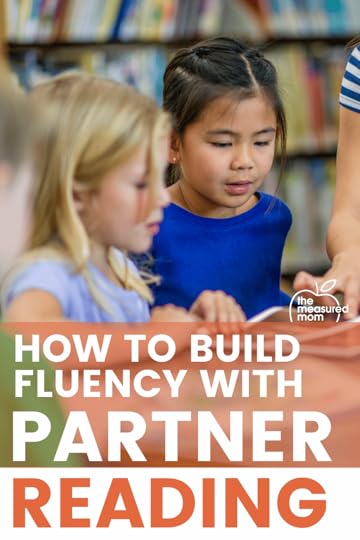
Are you looking for more ways to build fluency? Try partner reading!
Partner reading (sometimes called buddy reading) is when students are paired up to read together.
How partner reading works
Assign reading partners. Be careful not to pair students that are very different in ability. One recommended approach is to (privately, of course) make a numbered list of your students from most skilled to least skilled. Cut the list in half. Then assign the top of each list to the top of the other list. For example, in a class of 26, Reader 1 would be paired with reader 14, Reader 2 with Reader 15, etc.The teacher chooses the text or each pair chooses a book, poem, partner play , or other reading material.Students decide how they will read the text together: reading chorally, alternating pages, or reading by line (as in a partner play).As one student takes the role of reader, the other student is the listener/supporter. A Reading Rockets article calls these roles the player and the coach.The supporter’s role is to help find the place in the text, give appropriate prompts when the other student is stuck on a word, or simply give words after a reasonable pause.Students pause periodically to discuss what they’re reading.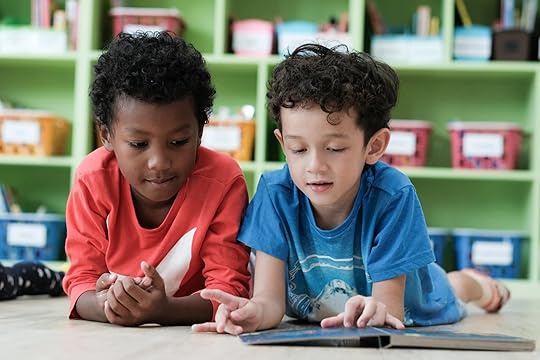
Benefits of partner reading
Buddy reading can be an excellent alternative to the familiar “sustained silent reading,” because struggling students can get the support they need and are less likely to be off task.
Buddy reading is also a great alternative to round robin reading, because students read much more than they would if they were taking turns with the entire class.
When taught how, students can provide each other with feedback as they monitor comprehension.
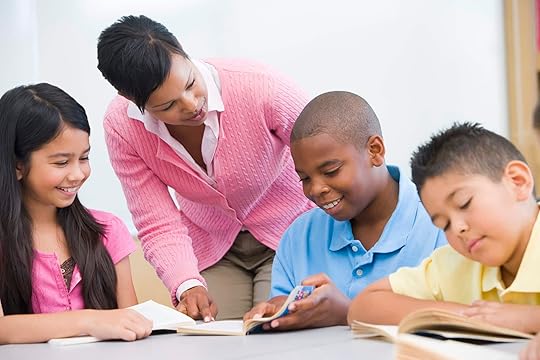
The teacher’s role during partner reading
When you first introduce buddy reading, your role is to circulate and make sure everyone is on task. You may help students with a word that neither reader knows. You might resolve disputes, help a listener/supporter with their role, or simply listen in as children read.
Another important role is to evaluate student pairings. Is one reader doing all the work? How can you help that student be more of a coach? Maybe it’s best to assign new partners.
Please note: Eventually you may choose to move buddy reading to centers, where students will read while you’re meeting with small groups; wait to do this until your students have demonstrated that they can buddy read quietly and independently. If possible (I know your schedule is tight!), try to include buddy reading outside of centers at least 2-3 times a week so you can facilitate.
Partner reading in action
This video from the Institute of Education Sciences is worth a watch!
Tips for choosing reading material for buddy reading
As noted in the video, instructional level text is appropriate for partner reading when the teacher is providing support. Don’t be afraid to provide support by first reading it to the class and/or reading it chorally as a whole group.When students are doing partner reading at centers, it would be best to use independent level text that students have read before. This is a great time to have students practice rereading decodable text, shared reading texts, poetry from their fluency development lessons, and other familiar text. At centers, it may work better to have students more closely matched in reading ability. Test it!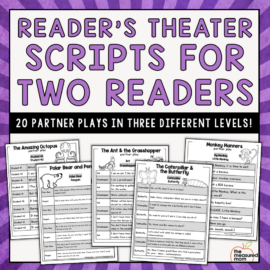
Partner Plays: Reader’s Theater Scripts for 2 Readers
$20.00
When you purchase, you’ll get a set of 20 different plays in three levels each … a total of 60 scripts!
Buy Now
How to help students learn to do partner reading effectively
This is where we have to break the process down to its smallest pieces and teach each one. I wish we didn’t have to, but we do!
Show students where in the room they may sit as they partner read.Show students how to sit “side by side” and “knee by knee.” Some teachers use EEKK: Elbow to elbow, knee to knee.Model how to help a reader with an unfamiliar word as well as how long to wait before offering support.Demonstrate what is appropriate discussion and what would be considered off topic.Provide examples of discussion starters so students understand how to talk about the book during and after reading.Will you do partner reading with your students?
Stay tuned for the last post in our fluency series!
Part 1 Part 2 Part 3 Coming November 7
References
Kuhn, M. & Levy, L. (2015). Developing fluent readers. The Guilford Press.
Rasinski, T. (2010). The fluent reader. Scholastic.
Reading Rockets. (n.d.) Partner reading. https://www.readingrockets.org/strate...
The post How to build fluency with partner reading appeared first on The Measured Mom.
October 23, 2022
How to improve oral reading fluency using poetry
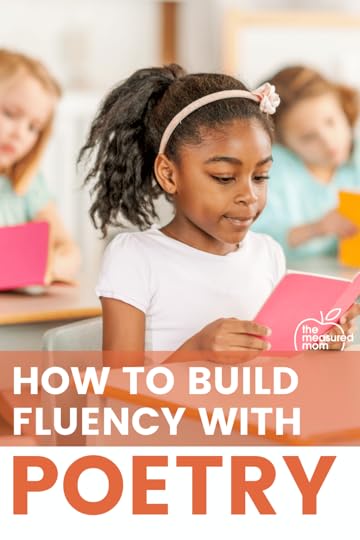
Do you have students with poor oral reading fluency?
Their reading is slow and labored.They frequently stop at unknown words.They lack expression.They struggle with decoding.It’s no surprise, then, that they lack a good understanding of the text. After all, fluency is the bridge from decoding to comprehension.
The good news is that repeated reading has been shown to improve reading fluency.
There are many ways to do repeated reading (that’s coming in a future blog post), but today we’re focusing on improving oral reading fluency using poetry.
“Poetry has melody, rhythm, pacing and pitch that supports building fluency skills, especially prosody (expression, automaticity and comprehension)” (Hancock, 2018).
And of course … it’s fun!

If you’re concerned that not all students will be able to read the chosen poem because you have so many different reading levels in your classroom (who doesn’t?!), the Fluency Development Lesson will save the day.
Who created the Fluency Development Lesson?
The Fluency Development Lesson (FDL) was designed by Nancy Padak and Tim Rasinski as a way to improve the fluency of students who were receiving Title 1 Instruction. Rasinski (2010) noted that the “students read the connected text we gave them in such a slow, disjointed, and labored manner that we wondered how they could possibly understand any of it” (p. 145).
After implementing FDL for several months, Rasinski and his colleagues found that students made substantial gains in the reading fluency and overall reading. The success students had with FDL texts transferred to other texts.
And … both students and teachers enjoyed the lesson! (Rasinski, 2010)
How does the Fluency Development Lesson work?
The following infographic is based on the model designed by Padak and Rasinski, with a few small tweaks.
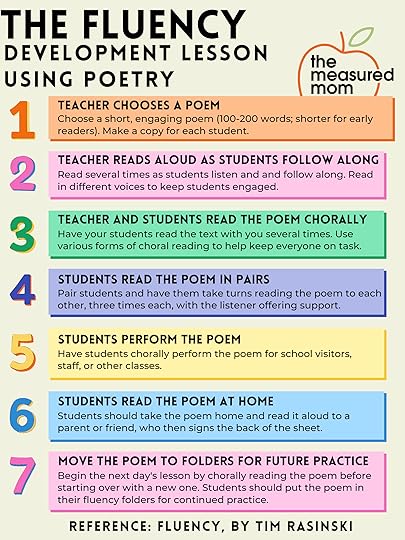
This only takes about 15 minutes per day!
Where to find poems for the Fluency Development Lesson
The Children’s Poetry Archive has a wonderful collection of poems that are read out loud; you can also get the text. Poets.org has a set of poems for kids. You’ll just need to copy and paste them into a document and make the font larger. This will take a little more leg work, but you can get children’s poetry anthologies from the library and type up your favorites. Imagination Soup has a great list of anthologies. Copy and paste the poems from poet Ken Nesbitt’s website . These are silly and fun, and many would work for younger readers. Poetry Minute is great! Each poem can be read in under a minute. At first glance I saw a number of poems that would work for beginners.If you’re a member of The Measured Mom Plus, our affordable membership for PreK-third grade, check out our growing collection of fluency poems! (Not a member yet? Learn more here! )Stay tuned for the rest of our fluency series!
Part 1 Part 2 Coming October 31 Coming November 7
References
Hancock, L. (2018, April 27). The Dynamic Duo: Poetry and Fluency. Literacy Junkie. https://www.literacyjunkie.com/blog/2...
Rasinski, T. (2010). The Fluent Reader. Scholastic.
The post How to improve oral reading fluency using poetry appeared first on The Measured Mom.
What to do after administering the ORF: A conversation with Dr. Jan Hasbrouck
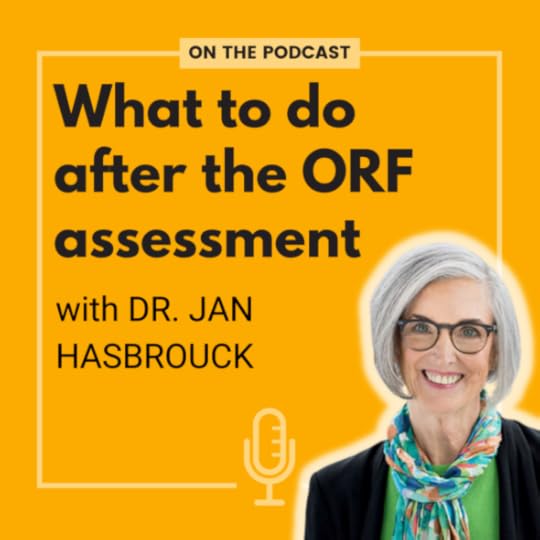 TRT Podcast #98: What to do after administering the ORF: A conversation with Dr. Jan Hasbrouck
TRT Podcast #98: What to do after administering the ORF: A conversation with Dr. Jan HasbrouckIn this second episode with Dr. Jan Hasbrouck, she shares the origins of the Oral Reading Fluency Norms (imagine compiling this data in the days before computers!). Dr. Hasbrouck also reminds us that the ORF assessment is a thermometer; after administering, it’s up to teachers to do more assessment to find the root of the problem.
Listen to the episode hereFull episode transcriptTranscript
Download
New Tab
Anna Geiger: Hello and welcome to Episode 98 of the podcast! Today is the second half of my interview with Dr. Jan Hasbrouck. Last week she helped us understand the concept of fluency and why it's so complicated. Today, we're going to talk about oral reading fluency.
You may be familiar with the ORF norms chart. The chart shows the oral reading fluency norms of students, as determined by data collected by Jan Hasbrouck and Gerald Tindal.
When teachers give their students oral reading fluency assessments, where they check to see how many words they can read correct per minute, they can refer to this chart to see whether their students' oral reading fluency is on track, or whether there's a red flag that we need to figure out what else is wrong that's causing them to read so slowly.
Again, I apologize. My audio for this episode is not the best, but Dr. Hasbrouck comes in nice and clear. We'll get started right after the intro.
Dr. Jan Hasbrouck: There are three publications. There are three sets of Hasbrouck and Tindal norms. The first one, the publication was in 1992, but that's a whole story of the challenges of getting research published sometimes.
I first started working with Gerry Tindal at the University of Oregon, which was the mid 80s. I became a reading coach in 1985, and by 1986 I was working with Gerry. He had come, as I had mentioned, from the University of Minnesota where he was part of a group of people who essentially invented a whole bunch of measures called curriculum-based measures. One of which was this measure of oral reading fluency, of having students read out loud for a minute and scoring their words correct per minute score. That's one of a suite of assessments called curriculum-based measures. But Gerry was a doctoral student working with Stan Deno and folks there who invented this measure.
So it was very new, but Gerry was a big believer that words correct per minute was the thing. You needed to measure that with students, and it was going to tell you a whole lot about who was on track and who wasn't. And of course, it was a brand new measure, I'd never heard of it before, and having been a reading specialist for fifteen years, I was extremely skeptical.
I just thought, as many people still do when they first hear about ORF (oral reading fluency), should we really use a one-minute measure of cold, unpracticed reading, and that would be enough to tell us anything about anything? I was as skeptical as anybody when I first heard about it.
At that time, because it was a new measure, there were no norms to indicate what those numbers should be. For a third grader reading 83 words correct per minute in the winter, what does that mean? We had no norms.
What the original researchers suggested, the University of Minnesota folks suggested, was that schools should establish their own norms, and they had procedures for doing that. They said to test all your kids and create norms for your building.
When Gerry told me that I thought, "Well, that's ridiculous!"
I had spent my entire fifteen years up to that point working in low performing schools. I said, "What's the value in assessing our low performing school? We already know we're a low performing school, who cares about the 50th percentile at a low performing school?" And I said, "We need national norms."
He thought that was a good idea and put me in a little room with a desk and a ruler and a calculator, and brought stacks and stacks and stacks of paper. Very few people back then were doing ORF measures of their students, but there were a few, and through that process of literally using a ruler, going down and typing in scores on my calculator, we came up with some norms for oral reading fluency from second grade through fifth grade.
That was the first study. That's all the data we had. I think in total it was about 10,000 students, which was still a lot of rulers and typing. That was a lot of scores for me to put in all by myself. There were no computers back at that time, or I didn't have one.
So we wrote up a little article about this new way to assess kids called oral reading fluency and what the score should be. I probably finished that work in 1987 or 1988, and it took us until 1992 to get it published because every time we submitted it, people's reactions were like mine. They were horrified! Why would we assess kids on a one minute measure? That's ridiculous. Who cares about that?
It was finally published, not in a research journal, but in a special ed teacher practitioner journal called "Teaching Exceptional Children." They saw the value of it and they published it.
Then over years the reading world discovered it. The internet started, I guess, in its early stages, and people started learning about it. It became a measure that people were interested in, but there were no national norms. There was no DIBELS or aimsweb or Acadience or FastBridge or easyCBM. In those early years, people were just creating their own assessments, so they wanted norms.
Then in 2006, we did it again. By then we had access to a quarter of a million scores from first grade to eighth grade. We did the study again and published that in "The Reading Teacher." We chose that, not because it's a reading research journal, but because we wanted to get this information into the hands of as many teachers as we could.
Then ten years after that, we thought it was time to update it, and so in 2017 we compiled our newest set of norms. That one has over six million students. This time we only had access to first through sixth grade, for a lot of reasons.
But those norms, when you look at those three sets of norms and other norms all kind of coalesce around the same. Now, of course, we have the publishers who have created commercially available assessments from that research, and looking at all the norms together, they kind of coalesce around the same. There are certainly differences between aimsweb benchmarks and easyCBM benchmarks and DIBELS benchmarks, a little bit. People using those commercially available products sometimes do go then to the Hasbrouck and Tindal norms, because ours are compiled from multiple measures. Ours are not just aligned with a single assessment.
But let's get to the second part of your question about how we should use them.
They really are to help teachers get a sense of where their students are in terms of their acquisition of automaticity. That's a very important piece of information, and to be able to acquire that piece of information in one minute is pretty extraordinary. It's not, and never was intended to be, the only measure. It doesn't diagnose reading problems. It doesn't tell us a lot. It actually doesn't really tell us about a student's fluency. It tells us about their automaticity.
There are many people who have tried hard to consider changing the name of that assessment from oral reading fluency. Because fluency, as we've talked about, is much more complex. It has expression and prosody. It is connected with comprehension. A sixty second assessment doesn't measure that, but it does measure automaticity.
So those folks back at the University of Minnesota were absolutely right that they were onto something. We now have close to forty years of research where the words correct per minute score has been shown to correlate or predict comprehension, almost better than anything else we have. And it takes a minute to do that!
So we do know that, in general, those students who have not reached the 50th percentile on an oral reading fluency measure when reading unpracticed grade level material are not on track for future success in reading.
That's the primary way I feel that those norms should be used. They should be used to check on individual students' relationship to the normative progress that we know students should have.
Some very recent research came out that I'm citing a lot. It was Wyatt et al. that did a study where they went back and looked at NAEP scores, the National Assessment of Educational Progress, and wanted to know what ORF scores, or words correct per minute scores, best predicted NAEP scores.
They were looking at fourth graders, as the first NAEP test is given to fourth graders. The fourth graders who were at the top of the NAEP, which is the advanced level, were reading at the level of the 75th percentile on Hasbrouck and Tindal norms. The students who were at the advanced level, which is where we want students to be, advanced basic level, were reading around the 50th percentile of the Hasbrouck and Tindal norms. And the kids who were not successful on the NAEP, which is a comprehension test, bottom line, were below the 50th percentile.
So that suggests to me that what we've been saying for years based mostly on hypothesis, that you need to get kids to the 50th percentile, is true, and there is some advantage to being as high as the 75th.
But that study really to me feels quite conclusive in saying that those kids who are just reading super fast don't seem to have any benefit for comprehension. Which makes sense to me as a practitioner, but now we have some good clear evidence about that.
Anna Geiger: Yeah, I can definitely speak to that with one of my kids who, of all six kids, he's the one that least prefers to pick up a book. He can read "very fluently," but I'll ask him what it was about and he doesn't always know. So I'm working on slowing him down. It's that thought that reading is a race, don't worry about expression, and that's not where we're headed.
For a teacher that does the oral reading fluency with their students and then sees that some are lower than where they should be, what's the next steps? I know you've talked about how ORF is a thermometer. It doesn't diagnose. So what comes next? If a teacher notices that someone is low, what should the next steps be?
Dr. Jan Hasbrouck: It's a very good question and it's a sophisticated question that not a lot of people are always asking.
A lot of administrators are uninformed about that idea that ORF is a thermometer and that's all. Just like in the world of a physician, if they use a thermometer to take your temperature and find you have a fever, they don't treat the fever. I mean, sometimes this might be, but the CAUSE of the fever is not identified by the thermometer. So they're not going to fix you by plunging you in a bath of ice water to lower the fever. It's not the score that's important, it's what it could indicate.
So in the medical world, a fever is an indicator that something is amiss. But in conversations that I have had with physicians about, "When you see a high fever, what does that mean to you?" They start talking about all the things that can cause a fever: it can be flu, it can be COVID, it could be a ruptured appendix, it could be other kinds of infections or inflammations. It means something's not right, but what it does for a physician is then trigger a whole other set of assessments called diagnostic assessments.
That's exactly what should happen with us too. Our students have an academic fever if they are not strongly at the 50th percentile on unpracticed grade level text.
What caused that fever? Often when I'm trying to explain this or help teachers understand this, I will pull out Scarborough's Rope again. It helps to point out that those students who seem to be stuck at the middle of Scarborough's Rope where the pieces are being woven together, they can read, but they're not reading at that tightly woven rope. They're not reading well.
Is that loosely woven rope caused just by the fact that they're not yet sufficiently fluent? Should we work on just reading more to help them become fluent? For some students, yes, that's it. They read quite well, but all they really need is to practice, practice, practice, practice to become more fluent. However, that's only a subset of those children.
For some of those children, we go back to the beginnings of Scarborough's Rope and look both at the language piece and the word recognition piece. What I have found for a lot of my students who struggle with becoming fluent readers is that it's at the bottom part of Scarborough's Rope. It's the word recognition. They have some gaps or weaknesses in the foundational word recognition skills. Like it could be they're still struggling with phoneme awareness or they're still struggling with some aspects of word recognition. And if you're struggling with both of those things, you're going to struggle with the acquisition of sight words.
A lot of our students who aren't fluent, although they may be pretty good readers, have not acquired sufficient sight vocabulary. Their orthographic mapping process is faulty. If it is faulty, it's likely some deficits in phoneme awareness and phonics, and vocabulary we know plays a role in that. We are all better at turning words into memorized sight words if we know the function or the meaning of that word.
So if a student is struggling with their fluency as measured by words correct per minute, we should do some diagnostic assessments quickly. We don't need to send them to a school psychologist for a two or three-hour deep dive. It's more that we should do a little check of their phonics or do a little check of their phoneme awareness.
If you suspect that insufficient vocabulary academic language is an issue, we have some ways to take a look at that. That's where, in most cases, you're likely going to find some things that we need to be working on along with fluency, to make sure that we do get eventually to that tightly woven rope.
Anna Geiger: I know you mentioned that this is not always understood. How are people, in your experience, misusing the results of the ORF? If they see a certain reading words correct per minute, what are you seeing some schools do that you would not recommend?
Dr. Jan Hasbrouck: Well, I would say the main thing is using it as if it were a measure of fluency that you have just used diagnostically to assess, and then saying that the treatment for that is to do lots of intensive work to help you become a more fluent reader. In too many people's minds means that means a fast reader, and that's going to be an effort of extreme frustration for everybody if that student is struggling with fluency because of underlying issues.
I think the name of the assessment being oral reading fluency implies that to people. I don't blame the end user. There's a lot of blame to go around on that. We should rebrand that assessment and not call it oral reading fluency.
These days I usually just call it a measure of words correct per minute. Words correct per minute, which is a measure of automaticity, is an indicator of proficiency in underlying skills.
So if they're not proficient, that likely means their underlying skills have some weaknesses that we can go back and do some remediation on. Depending on the age of the student, we are likely going to do that skills remediation while we also are working on fluent reading of text. So we should be doing all of that altogether. But if the intervention is just doing something to get the kids to read faster, that is very likely going to fail and make everybody frustrated.
Anna Geiger: So I've seen some teachers that have a passage that all of their students are responsible for. And at the first day of the week they read it, they check the words per minute, they actually graph it on a little graph, and they just keep doing that all through the week to see how many they get. What would be your response to something like that?
Dr. Jan Hasbrouck: I actually recommend graphing students' oral reading fluency scores over time when I do workshops on best practices in intervention. If we're concerned about students, we really do need to collect some data and monitor their progress.
I also, though, always talk about doing that kind of thing in a differentiated way. I think that we always start with the classroom time that we have and it's never enough, and if we're talking about the entire classroom of students then of course we have great differentiated needs. We've got students who are probably, in almost every classroom, sailing along and doing great. We've got some students who are just making exactly the progress we would expect. And we've got some students who are struggling.
Given the fact that there's never enough time in classrooms for the instruction, which is the most important thing we do, instruction and intervention, I want to be very cautious about how much time is being spent on data collection.
So I think teachers, just like physicians, can differentiate data collection if you think about it.
A lot of us who are reasonably well only go see our doctor once a year. We get these once-a-year assessments and we check our blood pressure and cholesterol and all that. Our doctor says, "Everything looks good. I'll see you next year."
A good friend of mine right now is in the hospital. She just moved out of intensive care following some surgery. While she was in intensive care, she was getting assessments every minute of every hour. The level of assessment goes up when the need goes up in the medical world.
And that should be the same for us too. Weekly assessments of students using words correct per minute is very appropriate if a student has very high needs because it is a very sensitive measure, and we can see relatively quickly, over a period of a few weeks usually, whether our intervention is working or not. And if it's not working, we need to do something different.
I wouldn't recommend weekly assessment of our kids who seem to be doing fine. For those students, especially in our early elementary years, I do recommend those words correct per minute benchmark checks in the beginning, middle, and end of the year. As well as teacher observation of the students as they're working, doing little checks of their spelling, which is a really interesting thing.
A teacher can say, "We've been working on words that have blends at the beginning. You can decode those. Well, now take out a piece of paper or a whiteboard and see if you can spell those words. Can you spell the word, 'slam?'"
We do little checks like that to see if indeed the kids you think are moving along are actually moving along, but that can be done just as part of small group instruction, or even whole class instruction. But I think we need to be cautious about the amount of time we devote to data collection and differentiate that based on the needs of our students.
Anna Geiger: Thank you.
I just have one more question for you. Timothy Shanahan wrote a blog post with some sort of suggestion for a literacy reading block schedule. One thing he said was that every day there should be time for fluency building. What do you think should go in that block? I know it depends on the grade, but just some general ideas.
Dr. Jan Hasbrouck: Yes, and I appreciate that Tim did that. It is important because when we consider that goal on Scarborough's Rope, that tightly woven rope, the only way we're going to get there is practice. So it's not just the grade level or age of the student to consider, much more important than that is their skill development. Where are they in their development?
At the very beginning of the rope, fluency practice is more at the sound and letter level. Kids can be doing some work outside of whole class or small group instruction in partners, or they could be doing some center work where they're practicing that.
Then you have fluency practice with really beginning novice readers. Typically that would be late kindergarten or early to mid first grade who would do fluency practice with decodable text. Again that can be independent, or it's ideal for them to be working in partners or working with an older student or somebody who can listen and do some corrections with them.
Once students, wherever they are in the trajectory, have broken the code, then they really can apply their decoding to text that has more variety to it. For those kids, once they're really quite well-established readers, that's going to be early to mid second grade, that's when sustained silent reading, independent reading, can help you be a better reader.
We do know that there's value in independent reading, but only once you've become an established reader. Before that it's the individual component parts, the word level and the very simple text level. More often that's better done not silently and not independently, but with somebody there who can listen and give you some feedback and practice.
But ALL of that is fluency practice. We sometimes think of fluency practice only for those well-established readers. But we can practice the component pieces, text appropriate for that child's developmental level, and it should be done on a daily basis for sure if we want to get all kids to that tightly woven rope. And we do want to get all kids there.
Anna Geiger: Awesome. Well, usually I edit my episodes quite a bit, but I'm not going to want to cut anything out of all the wonderful things you had to say! Thank you so much for all that you do and continue to do. I just love catching any workshop that you're giving. I always make sure to watch those. Thanks for not retiring yet!
Dr. Jan Hasbrouck: Well, thank you for your interest in my work. I appreciate it.
Anna Geiger: Please head to the show notes for this episode to find links to Dr. Hasbrouck's work, as well as the oral reading fluency norms chart, and links to many presentations that she's generously shared and that are posted on YouTube. You can find the show notes for this episode at themeasuredmom.com/episode 98. Talk to you next time!
Scroll back to top
Sign up to receive email updates
Enter your name and email address below and I'll send you periodic updates about the podcast.
powered by
Related link Hasbrouck-Tindal Oral Reading Fluency norms Books by Dr. Hasbrouck Reading Fluency (written with Dr. Deb Glaser; for the full version of the book, see Benchmark Education’s website) Conquering Dyslexia Student-Focused Coaching Learn more from Dr. Hasbrouck!The Science of Reading: An Introduction (with the Reading League)Reading Fluency: Essential for Reading Comprehension (with Oregon RTI)Dyslexia Awareness (with McGraw Hill)Conquering Dyslexia (with Read Naturally)The Science of Fluency, part 1 (with Read Washington)The Science of Fluency, part 2 (with Read Washington)The Science of Reading 2.0: A Deeper Understanding (with Read Washington)What Do We Need to Know about Reading Fluency? (with Read Naturally)
The post What to do after administering the ORF: A conversation with Dr. Jan Hasbrouck appeared first on The Measured Mom.
October 16, 2022
Fluency isn’t just about speed: A conversation with Dr. Jan Hasbrouck
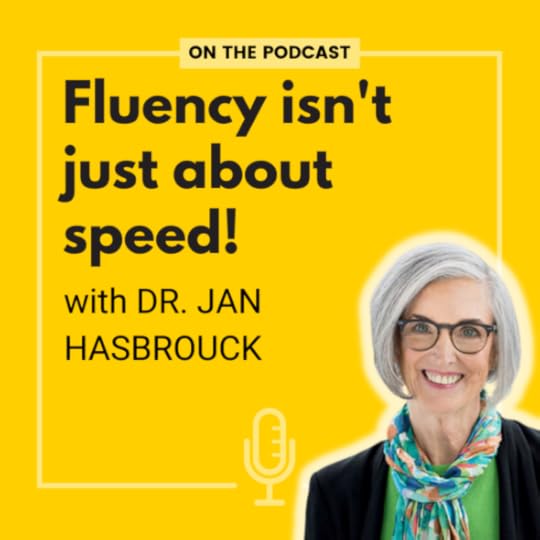 ��TRT Podcast #97: Fluency isn’t just about speed: A conversation with Dr. Jan Hasbrouck
��TRT Podcast #97: Fluency isn’t just about speed: A conversation with Dr. Jan HasbrouckToday we hear from Dr. Jan Hasbrouck, a writer, consultant and researcher who is full of wisdom about the science of reading – and fluency in particular. In this episode she helps us understand the concept of reading fluency. It’s not just about speed!
Listen to the episode here��Full episode transcriptTranscript
Download
New Tab
Hello! Anna Geiger here, and I'm very excited today to kick off our series about fluency with Dr. Jan Hasbrouck!
Dr. Hasbrouck is a big name in the science of reading community because she's been a player for about fify years. She is a researcher, educational consultant, and author. In the past, she was a reading specialist and a literacy coach, as well as a college professor, and now still after all these years, is very active in helping people understand the science of reading.
We had such a good conversation that I split this episode into two. This week we're going to meet Dr. Hasbrouck, learn more about her experience in the field of education, and learn why the concept of fluency is so complicated and how it's a lot more than just reading quickly.
I was a bit nervous as I was getting set up to welcome Dr. Hasbrouck and I chose the wrong audio for myself. So I apologize that my audio is a little muddy, but Dr. Hasbrouck comes in loud and clear.
Anna Geiger: Hello everybody! Anna Geiger here, and I am so excited to welcome Dr. Jan Hasbrouck to the podcast today! She is an educational consultant, author, and researcher, and if you're familiar with the science of reading, you've definitely seen her around. She is retired now, but still does a lot for the science of reading by giving a lot of presentations and webinars. We're going to welcome her and ask her to introduce herself. Hello, Dr. Hasbrouck!
Dr. Jan Hasbrouck: Hi, nice to be here! Yeah, and one little correction there about me being retired. I am no longer affiliated with a university, or any agency specifically like that, but I am busier than ever.
There are a lot of people, I think, in my colleagues, peer colleagues from my generation in this field, particularly in reading, who find it kind of impossible to fully retire because our mission is so important. So many teachers have eager curiousity about what are the best practices, what does evidence say, and what is this thing called the science of reading? Speaking for myself, when I feel like I can be helpful to people answering those questions and translating this incredibly complex information into the complex world of classroom teaching, there's a mission involved in that, maybe even a moral obligation. So I can't call myself retired, certainly my kids and my family would not call me retired. Retirement has got to look a little different from what I'm doing right now!
Anna Geiger: Yeah, well it's true, I definitely appreciate hearing that. Like you said, people of your generation are very, very busy presenting at so many summits and workshops, and that's just been really helpful to the rest of us who are still trying to figure all this out.
Can you talk to us a little bit about how you got into education and transitioned into more of a professor role?
Dr. Jan Hasbrouck: Yeah, sure. I kind of always thought I would be a teacher. I dabbled around in a few other things, trying to see if teaching was a right fit for me, and it really was. And I was guided by teacher mentors along the way because it seemed like as I was moving through school, that was what I wanted to teach. When I was in elementary school, I thought for sure that I would be a fourth grade teacher, when I got to middle school, middle school biology was what I wanted to do, and it was a high school English teacher, actually, that first planted the seed about being a reading specialist.
But that really finalized when I was in my undergrad training at the University of Oregon, and I was actually very frustrated with the education I was receiving initially. I really resonate with that very vast, huge Facebook group called "The Science of Reading - What I Should Have Learned in College," because I was sitting in those courses and just kept feeling frustrated! When are they going to teach me how to teach?
By a set of just amazing life-changing happenstances, I connected with somebody else who was studying teaching, but she was in a different program at the University of Oregon where they were focusing on direct instruction. She said, "You should go over there because they're looking for students." So I did. I interviewed and they took me on, and that was during my junior year of undergrad.
So very early on I got started with understanding what explicit systematic instruction is. It's interesting for me to hear a lot of people feel like this is just a new discovery. When I was 19 years old, I was working with Zig Engelmann who taught us what explicit systematic instruction was. We were taught how to do continuous phonation and letters for phonics. I mean, all of this stuff is at least fifty years old, but it's been confirmed. The current research has been confirming that.
So I stayed on working with that group, the direct instruction folks at the University of Oregon, and they had a Master's program that involved me doing work with them training other teachers. There was a huge multi-year research project, a federally-funded research project called Project Follow Through, that was going on. I became one of the trainers, flying around the country and working with teachers in various follow-through sites.
Then I decided I really needed to get into the real world, so I got a job as a reading specialist. I did that in two different districts for about fifteen years.
Then my boss at the time in Springfield, Oregon had this idea that it would be helpful if I could be supporting teachers. What I would now call that is a coach, a literacy coach, but he didn't have that terminology. He just said that he thought it would be good if somebody, and he was looking straight at me, could go out into the schools, and he was really focused on the other reading specialists in the district.
I took on that job, and any literacy instructional coaches listening to this can resonate with the fact that it is a rather terrifying job, especially if you have no guidance or support or job title or anything. Within a very short period of time, that terror sent me back to the University of Oregon trying to find, is there some knowledge base? Is there some skillset? How does one work with their peer colleagues to help them be the best reading teachers they can be?
That's where I connected with Gerald Tindal. He was a new graduate from the University of Minnesota, and Gerald and I worked together, and he convinced me not just to study coaching and consultation, but to stay on for a doctoral program. I did that at the University of Oregon, and ended up then at Texas A&M University.
It's been a wonderfully exciting ride since then being a practitioner and a researcher, and also someone always connected with schools. That's where I started, that's where my heart is. When I do research, it's always very practical research. "How can this be useful to teachers?," is my framework for the work that I do.
Anna Geiger: I love that, especially because I think, for a lot of teachers, myself included, in the past when we heard "researcher," we thought of someone in a coat, somewhere else, that doesn't know anything about the classroom. It's really helpful to hear your experience that maybe many researchers were teachers already and understand how to translate it.
It's also very interesting for me to hear your background because maybe you have seen how the science of reading has really just kind of blown up in the last couple of years. I just did a ten-part blog series with people who had transitioned more from a balanced to structured approach, and for almost everybody it was around 2019, when Emily Hanford's article came out, that they had started thinking about it.
But for you, having a long career watching balanced literacy kind of take over, before we get into fluency, I would just love to hear your perspective on that a little bit and what that was like for you.
Dr. Jan Hasbrouck: It was rather horrifying for me through all the iterations.
Early on when whole language emerged as THE answer, THE way we should be teaching in classrooms, it was apparent to me from the beginning that theoretically it didn't make sense. This belief system that the acquisition of language, which is natural and supported biologically, we know a whole lot more about that now, but we've always known that. But then they rested their theory on that, well, since learning to read is intrinsically aligned with language, if we support the acquisition of reading and language in the same way we support the acquisition of language, just in this natural rich environment, making sure kids are exposed to all this stuff. I was quite certain that that was not going to be successful for all kids.
And we now know so much more! We know more about how different groups of children do acquire the skills of reading and writing in different ways, and for different reasons. We know that there is a percentage of children, we don't know the number exactly because we're always talking about human beings, but it could be up to 50%, maybe a little bit more than 50%, of kids who do learn to read and write relatively easily. You give them some kind of guidance, some kind of support, and voila, they become readers and writers!
But my entire career has been focused on the children NOT in that group, the kids who struggle. And I watched the implementation of first whole language and then balanced literacy, for the children for whom reading and writing is a painstaking acquisition.
I was just so frustrated that those very popular ways of teaching became the primary way that teachers were being prepared in universities, and knowing that if there wasn't quality research to support that, that it was ultimately going to fail our children.
In my career now of close to fify years, I've seen these things come and go, and I had a conversation just this week with some people about, is the science of reading going to be a fad? Just like whole language came and went, and balanced literacy came?
I don't think it is going to be a fad because of social media. That's the difference.
Back in the whole language days, we didn't have internet, and we didn't have social media. Balanced literacy has emerged during this period, but we now have teachers who can get online, ask the questions, and find podcasts like you are doing, and so many others like the science of reading facebook group and The Reading League, and it's much, much easier to sort through the noise and find the truth.
We are also seeing people, some of the leaders of that alternative movement, if you want to call it that, being persuaded to at least adopt some of the language of the science of reading.
Anna Geiger: Yeah, thank you for sharing that. That's so interesting to hear your perspective after your years in education.
I'm going to switch over to fluency now, and I'm going to start by reading the definition from the book that you wrote with Dr. Deb Glaser. This is probably the most complete definition I've read, so we'll start with that, and then we'll talk about, even with this nice clean definition, why the concept of fluency is kind of hard to wrap our heads around.
You wrote that, "Fluency is reasonably accurate reading, at an appropriate rate, with suitable expression, that leads to accurate and deep comprehension and motivation to read."
Yours may be the only definition I've found that actually incorporates comprehension inside of it, which is wonderful.
Can you talk to us about why it's still so hard to grasp the concept of fluency and how to build it?
Dr. Jan Hasbrouck: I think it is hard to grasp because it seems so simple when you first talk about it, and it's often talked about and discussed incorrectly by conflating speed with fluency.
In fact, in the wonderful National Reading Panel, in their chapter on fluency, a couple of times they talk about fluency by first describing it as reading quickly. And I know, because I know some of the folks who served on that panel and wrote those pieces, that if they had a chance to go back and do it again, they would NOT write about fluency how means reading quickly. Of course, they didn't stop there, they didn't say it's only reading quickly, but they put speed first.
They put "fluency is reading quickly," and that does get conflated with this much more complex construct called fluency because when we are listening to a fluent reader, they are reading quickly, usually. Although not super fast, because if they're truly reading for comprehension, which is really THE reason we read, you can read too fast, but that diminishes comprehension. Most of us, or a lot of us, worry about or are concerned about the kids who read too slowly.
Rate is only one piece of this complex construct. In fact, when Deb and I wrote our first version of the book, several times in the book we referred to fluency as a skill. A lot of people will still have that first version of the book, we don't have a second edition, but we were recently given the opportunity to do some updates, and we wanted to reel that back a little bit. It's not a skill that you teach.
I love Hollis Scarborough's infographic of the Reading Rope, which is ubiquitous these days, it's everywhere. I don't do workshops without showing Scarborough's Rope. But I think if we look at the end of that rope, that tightly woven part where all those strands come together, she refers to that as fluent, skillful reading.
It's an outcome of all of those component pieces, acquired to the level of automaticity. Automaticity is really the combination of accuracy and reading at an appropriate rate.
We should always talk about accuracy first, as Deb and I do in our definition. Accuracy is the foundation of fluency. You cannot get to fluency through rate. Rate isn't going to do it. You have to have accuracy.
In our definition we use reasonable because it doesn't have to be perfect, but it has to be reasonable to allow comprehension, and the rate has to be appropriate. Sometimes it is appropriate to read more slowly when we're really reading complex dense information, or it's high stakes information so we should slow down, and other times it's appropriate to read more quickly. But the ability to adjust that, maintain your accuracy and read at an appropriate rate, is automaticity.
That outcome, that tightly woven rope, is indicative of automaticity, of all of those strands in Scarborough's Rope. You have automaticity in language, receptive and expressive language. You have automaticity in the underlying components of word recognition and identification, phoneme awareness and phonics, and you've moved toward orthographically mapped word-sight recognition.
As a new novice learner acquires each of those individual skills and components, and then, through practice and instruction, becomes increasingly automatic at that, that's the outcome of fluency.
So I think it's the fact that some of us have mistakenly referred to it as a skill, that's kind of conflating and confusing. The fact that it is really a multifaceted aspect of reading, and it's an outcome, and the way that people have described it and talked about it and thought about it as speed, as reading quickly. It is not reading quickly.
Anna Geiger: Can you explain its role in the overall task of reading?
Dr. Jan Hasbrouck: Well in the overall task, it's very easy to say that fluency is necessary for comprehension, that's the role in just a few words.
The purpose of fluency, the reason we care about fluency, the reason we work so hard to help our students become fluent, is because of comprehension.
The National Reading Panel and most other people get that exactly right about fluency, that fluency is necessary, but not sufficient, for comprehension. I hear that all the time from my colleagues, especially those who specialize in working with children who are English learners, or who struggle with language acquisition in some way. They often say to me that, "I've got kids who are fluent, but they don't comprehend."
And I say, "Of course! You need both aspects of Scarborough's Rope, you need both component pieces."
I agree with everyone and I want everybody to understand that fluency is necessary, but not sufficient. So those people who are saying that their English learners are very fluent readers, but they are really word callers because they don't comprehend. Yes, because they have acquired automaticity in word reading, and that's fabulous because that will help them open that door to comprehension, but we need to develop their language so that they can interweave language with their good word-reading skill.
And then of course we know there are a lot of children who have the opposite. They have superb language, but struggle with automatic word recognition. We've got plenty of work to do!
But to your question, the purpose of fluency is comprehension. And then we, as you noted in our definition, Deb Glaser and I, stuck motivation on there. I stand behind that, and Deb does too. That's not something we've changed in the update of our book. It's not based on good rigorous science as much as it is our, I don't know, 127 years of clinical practice. We have yet to meet a reader who struggles with fluency who's also a highly motivated reader. There is a connection between fluency and motivation. And of course, just like comprehension, becoming fluent doesn't guarantee motivation, at all. But if a reader struggles with reading fluently, motivation is not going to be available to them, it's not going to be part of their reading experience.
Anna Geiger: Right.
Dr. Jan Hasbrouck: Yeah, that doesn't work.
Anna Geiger: And we know that if they're not motivated to read, they won't keep reading, and that's where the vocabulary and the background knowledge keeps building.
A lot of people talk about fluency now, but I know that wasn't always the case. In your career, have you seen when fluency became more of a hot topic, and what's your perspective on that?
Dr. Jan Hasbrouck: I would say fluency became a hot topic in the year 2000. Just like we can point to the explosion and interest in the science of reading to Emily Hanford's work, it was the National Reading Panel that came out with their report with the five main chapters, and one of them was fluency. At the beginning of that chapter, they did say something, they quoted, I think, Dick Allington's work, but it said something like fluency is necessary for skillful reading, but it is neglected in the classroom. I'm paraphrasing, but something like that. They definitely used the word neglected.
Well that certainly changed after that point! I think that, along with the relatively new, they were not brand new, they'd been around for about fifteen years at that point, but those curriculum-based measures of oral reading fluency, right around that time, those measures became more known to the general population. People confused the measures of oral reading fluency with this outcome of reading fluency that was so important, and we started teaching kids to read fast to get their oral reading fluency scores up without really understanding what was going on.
But you're right, before the year 2000, you didn't see a whole lot of discussion around fluency.
Anna Geiger: I hope you enjoyed part one of my conversation with Dr. Hasbrouck. Next week, we're going to talk more about ORF, Oral Reading Fluency, what we can learn from the results of a words correct per minute assessment, and what we can't learn, and what to do after we get those results. In the show notes for today's episode, you will get links to the book that Dr. Hasbrouck has written, as well as a big collection of YouTube presentations I could find that she's given for various groups. You can find those show notes at themeasuredmom.com/episode97. Talk to you next time!
Scroll back to top
Sign up to receive email updates
Enter your name and email address below and I'll send you periodic updates about the podcast.
powered by
Books by Dr. Hasbrouck Reading Fluency (written with Dr. Deb Glaser; for the full version of the book, see Benchmark Education’s website) Conquering Dyslexia Student-Focused Coaching Learn more from Dr. Hasbrouck!The Science of Reading: An Introduction (with the Reading League)Reading Fluency: Essential for Reading Comprehension (with Oregon RTI)Dyslexia Awareness (with McGraw Hill)Conquering Dyslexia (with Read Naturally)The Science of Fluency, part 1 (with Read Washington)The Science of Fluency, part 2 (with Read Washington)The Science of Reading 2.0: A Deeper Understanding (with Read Washington)What Do We Need to Know about Reading Fluency? (with Read Naturally)
The post Fluency isn’t just about speed: A conversation with Dr. Jan Hasbrouck appeared first on The Measured Mom.
October 3, 2022
How to improve reading fluency
Are you wondering how to improve reading fluency? You’re in the right place! This post is the first in a four-part series all about building fluency.
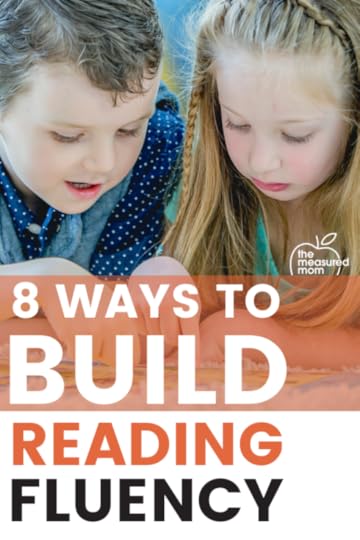
Do you have students who struggle with reading fluency?
Maybe they read in a stilted, word-by-word fashion.
Maybe they read accurately, but ooooh so slowly.
Or maybe you know readers who trip over words. To them, reading is awkward and painful.
I personally know a reader (right in my own house) who reads automatically and with little stumbling. But he readslikethiswithoutabreath. I have to remind him to read with expression, to pay attention to punctuation, and to read with inflection in his voice.
All of these students need to improve their reading fluency.
But what does reading fluency even mean?
Before we get started listing ways to build fluency, we need to nail down a definition.
What is reading fluency?Most definitions of fluency include mention of accuracy, rate, and expression. But the authors of Reading Fluency take it just a step further.
“We define fluency as reasonable accurate reading, at an appropriate rate, with suitable expression, that leads to accurate and deep comprehension and motivation to read.”
Jan Hasbrouck & Deb Glaser, in Reading Fluency
Did you catch that last part? Fluent reading leads to deep comprehension and motivation to read.
Sounds great!
But how do we get there?
8 Ways to build reading fluency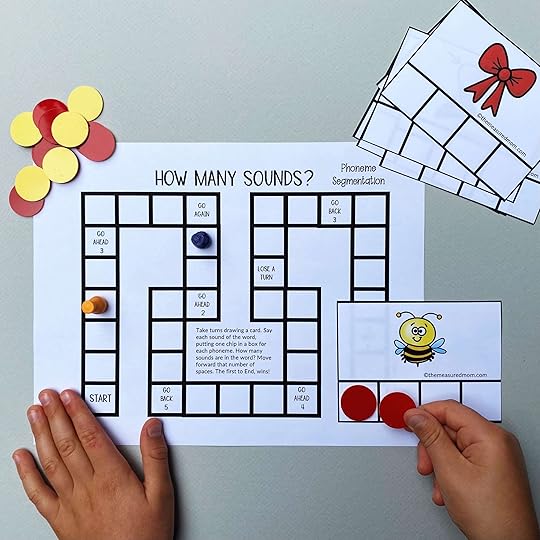 1 – Build phonemic awareness.
1 – Build phonemic awareness.If you’re wondering what on earth phonemic awareness has to do with fluency, here’s the deal. Phonemic awareness (the ability to identify and manipulate individual sounds, or phonemes, in words) is essential for success in decoding words. Since fluency is all about being automatic with word recognition, we’ve got to teach the skills that will get us to automaticity.
(The above picture is from my Phonemic Awareness Activities pack.)
Recommended reading
Do’s and don’ts for teaching phonemic awareness
2 – Teach phonics in a systematic, explicit way.
Research has told us again and again that students benefit from direct and structured phonics instruction. When we combine phonemic awareness with phonics, we are equipping our students to tackle unfamiliar words that could interrupt their fluency.
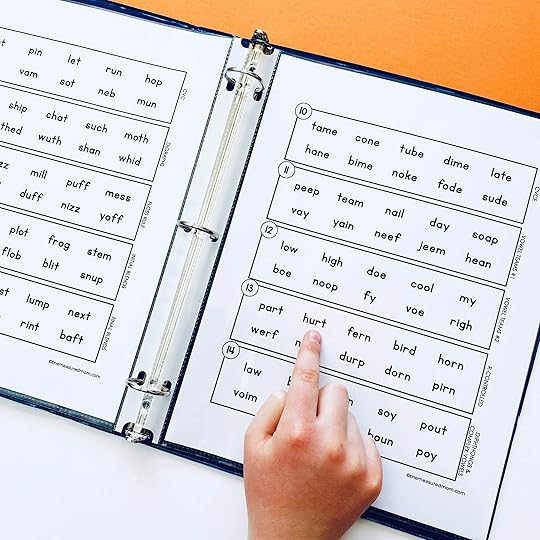
(In fact, if a student scores below benchmark on an oral reading fluency test, the first step is to give a phonics assessment to see if a lack of phonics skills is impeding progress. You can find my free phonics assessment here.)
3 – Teach students to read irregular high frequency words.While most words contain at least some graphemes (letter or letter combinations that represent phonemes) that are regular, some words include patterns that must be learned by heart. For example, in the word the, the final vowel sound has an unexpected spelling. In the word said, the ai has an unexpected pronunciation.
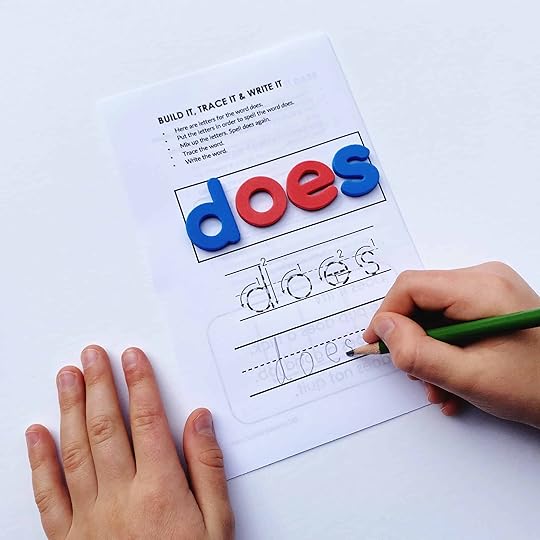
When teaching these irregular words, it’s important to remember that students learn them just like they learn any other word – and not through whole word memorization. Instead of drilling these as whole words, we can call attention to the parts that are regular and those that are not. (Check out my set of 30 free high frequency word lessons and books to see how this is done.)
After introducing words in this way, it’s perfectly appropriate to do flash card practice. Hasbrouck and Glaser (2019) recommend the following procedure:
Students write each word on the front of an index card (or the teacher may do this in advance).Students trace the letters while saying them and reading the word.On the back, students write a sentence using the word and/or draw a quick picture to help them recall the word. (The teacher may do this as well.)The cards can then be put on a ring or a recipe box for students to use for daily practice.When students practice the words, they can sort them according to their speed under pictures of a dog, rabbit, and turtle. The dog pile gets words that are read quickly and automatically. The rabbit pile gets words that are read with some hesitation. The turtle pile gets words that are unknown, read incorrectly, or read after several seconds. Students keep practicing until all cards get to the dog pile. (For more ways to use these flash cards, check out Reading Fluency, p. 81-82. Such a useful book!)4 – Read aloud to your students every day.When teachers don’t make daily read alouds a routine, I think the only reason must be that they aren’t aware of the countless benefits of reading aloud to our students.
I won’t go off on a tangent here, but this quote from Tim Rasinski (2010) is well worth sharing:
“Clearly, read aloud builds interest in reading, but its benefits do not end there. Read aloud helps you achieve three important goals with your students: it improves comprehension and vocabulary, and builds motivation” (p. 46).
Here’s one more benefit: reading aloud provides a wonderful model of fluent reading.
5 – Implement assisted readingThis simply means reading aloud alongside our students. As Rasinski (2010) puts it, “oral reading can be used as a scaffolding tool to ease the transition from modeling to independence” (p. 67).
Choral reading – groups of students (or even the whole class) read the same text aloud in unisionPaired reading – This research-based approach is not exactly the same as partner reading or buddy reading. In paired reading, a more proficient reader supports a less able reader by reading together chorally; the more proficient reader adjusts his/her volume and support as the other reader becomes more confident. The reader signals when the more proficient reader should read more loudly or bow out altogether. Audio recorded reading – Listening to an audio recording of a text will help build fluency only if the listener is reading along. Students can make great gains in fluency if they keep listening and reading along until they can read the text independently.6 – Provide opportunities for repeated reading
Our goal is for students to read one text several times so that they can read it fluently – with few errors, at an appropriate rate, with proper expression, and good comprehension.
I’m surprised when I see people question the value of repeated reading in large Facebook groups devoted to the science of reading. The truth is that we’ve had decades of research that show its value.
Research has, in fact, found that rereading a familiar passage not only leads to improvement on that particular passage, but fluency gains also transfer to the reading other passages.
You may be familiar with the concept of timed repeated reading – in which students read a passage multiple times until they achieve a desired rate. This is a powerful intervention that is best suited for students who fit this criteria:
Words Correct Per Minute scores are more than ten words below the 50th percentile on the Hasbrouck & Tindal ORF (Oral Reading Fluency) norms when they read grade-level or instructional-level text.Reading is slow but accurate.Decoding of individual words is also slow but accurate.Phonemic awareness is well developed.Comprehension is adequate or good.(Source: Reading Fluency, by Hasbrouck & Glaser)
When doing timed repeated readings, always make it a point to also talk about the text. Reading fluently is not all about speed!
7 – Do whole class fluency lessons.Later in this series I’ll walk you through the Fluency Development Lesson, in which teachers support students as they learn to read a short passage or poem with fluency. The FDL only takes about 15 minutes a day.
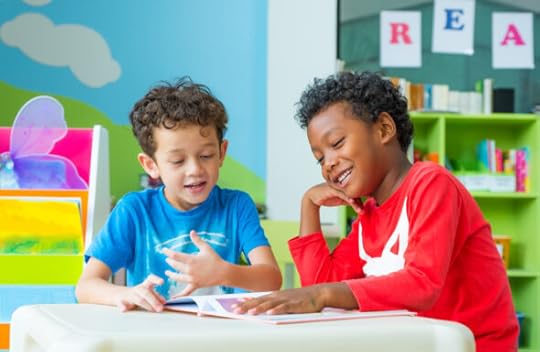
If you have more time, and you want to help all children achieve fluency with grade-level text, consider FORI (Fluency-Oriented Reading Instruction).
Here’s a general overview of FORI:
Monday – The teacher introduces the text and reads it while the class follows along; the teacher leads a discussion that focuses on comprehending the text.Tuesday – The teacher and students echo read the story; comprehension instruction is infused throughout; students take the text home and read it to a friend or family memberWednesday – Teacher and students choral-read the text; students who need extra practice read it again at home.Thursday – Students partner-read the text; students who need extra practice read it again at home.Friday – Students complete extension activities to broaden comprehension.I’ll be honest – I think I’d be ready to chuck that text out the window after all this time with it, so I’m more a fan of WIDE FORI, which introduces new texts on Thursday and Friday.
(Source: Developing Fluent Readers, by Kuhn & Levy)
8 – Provide opportunities for performance readingTimed repeated reading can be a great motivator for struggling readers who watch their performance improve during their sessions.
But repeated reading, while beneficial to all students, can be less than motivating if we go about it the wrong way. Thankfully, we can make repeated reading interesting and engaging for all students when we make it authentic.
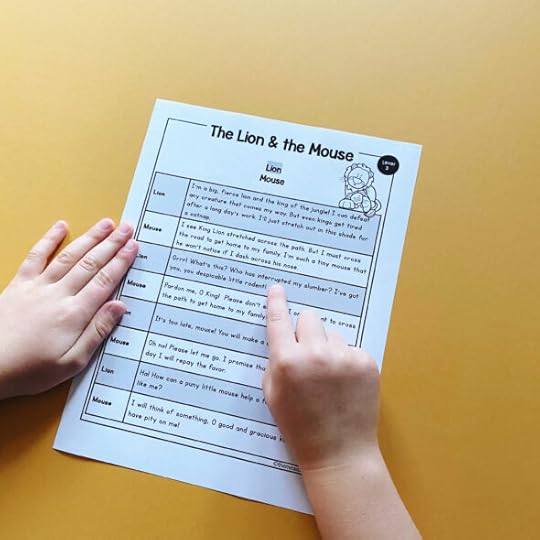
When repeated reading is done for the purpose of rehearsal for a performance, we can get everyone on board.
Students can reread texts multiple times as they prepare to perform in any of these ways:
Reader’s Theater or partner plays ( pictured above )Book talksReading aloud to younger studentsRecording books for younger studentsReading poetry aloudWhew – that was a lot! And it was just the first post in our series!
Stay tuned for more in the coming weeks:
Part 1 Coming October 24 Coming October 31 Coming November 7
References
Hasbrouck, J. & Glaser, D. (2019). Reading fluency. Benchmark Education Company.
Kuhn, M. & Levy, L. (2015). Developing fluent readers. The Guilford Press
Rasinski, T. (2010). The fluent reader. Scholastic.
The post How to improve reading fluency appeared first on The Measured Mom.
How to learn more about the science of reading
Here are we are, at the end of our Balanced to Structured Literacy series!
You’ve learned:
And … now what? How can you make sure you keep learning?
That’s what today’s post is all about!
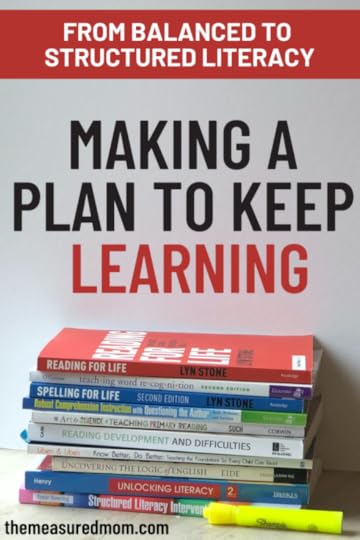
As you make a plan to learn more about the science of reading, let me explain what I’ve done over the last couple of years.
Step 1: I started by reading, reading, and reading some more. Know Better, Do Better was a great place to start.I reread Wiley Blevins’ book A Fresh Look at Phonics. I also reread Beck & Beck’s book, Making Sense of Phonics. I devoured Teaching Word Recognition (SUCH a good one!).I read Uncovering the Logic of English.(Those are some of the books I started with; other books I recommend for beginners are Shifting the Balance and The Art and Science of Teaching Primary Reading.
Check out this post!
Recommended Science of Reading books
Step 2: As I kept reading, I talked with teachers who had moved from balanced literacy to a more structured approach (lots of evenings on Google Meet!).
I can’t re-create those meetings for you, but in the summer of 2022 I published a 10-part podcast interview series with people who had transitioned from balanced to structured literacy.
You can listen to them right on the website!
Savannah Campbell from Campbell Creates Readers Christina Winter from Mrs. Winter���s Bliss Heidi Jane from Droppin��� Knowledge with Heidi Lindsay Kemeny , podcast host and classroom teacher Jessica Farmer from Farmer Loves Phonics Gina from Get Literacy Margaret Goldberg from the Right to Read Project Sarah Paul from Sarah���s Teaching Snippets Jan Burkins and Kari Yates , authors of Shifting the Balance Dr. Wendy Farone , LETRS trainer, Title 1 reading specialist (and a lot more!)Step 3: Early on, I joined a big science of reading Facebook.I admit – at first I could only be in them for ten minutes at a time because it was so overwhelming. But now I love to go and take notes, get book recommendations, or learn about new workshops.
Recommended -> Facebook group: Science of Reading: What I Should Have Learned in College
Step 4: I was also listening to science of reading podcasts.This list includes podcasts I listened to at the beginning of my journey as well as those I’ve recently discovered.
Science of Reading: The Podcast Teaching, Reading & Learning: The Podcast Literacy Talks Reading Teachers Lounge Melissa & Lori Love Literacy Edview 360After I had some knowledge under my belt, I began recording science of reading episodes on my own podcast, Triple R Teaching.
(And then, a couple of years later, I replaced my pre-epiphany episodes (1-33) with solid, science of reading-based ones.)
Step 5: All along, I watched free trainings online.Here are some favorite YouTube channels!
SoR-What I Should Have Learned in CollegeThe Reading LeagueOregonRTIiReading Science AcademyReading SimplifiedReading RocketsStep 6: Eventually I joined paid courses. Big Dippers CORE Online Elementary Reading Academy Top Ten Tools Keys to Beginning Reading Step 7: After all of this, I completely updated my online course so that it fully aligns with the science of reading.Becky Spence (This Reading Mama) and I open Teaching Every Reader twice a year, and it opens next on October 10, 2022!
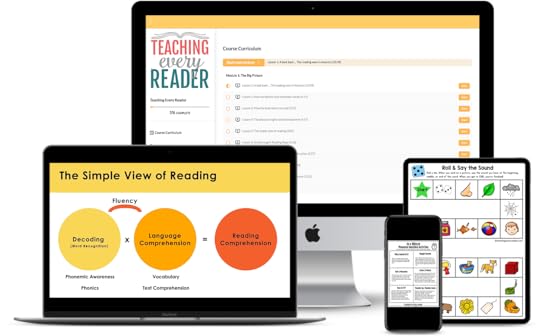 Learn more about the course here!Teaching Every reader will help you …Gain a solid understanding of the science of reading and understand its practical application.Improve your knowledge of phonemes, phonics, syllable types, and other essential understandings about the English language.Discover simple assessments that will help you pinpoint exactly what your students need to learn next.Get tried and tested tools for teaching phonemic awareness and phonics, building vocabulary, and improving comprehension.Learn how to deliver a powerful and engaging whole group reading lesson.Become a pro at planning and delivering small group lessons that accelerate student learning.Save hours of time with a huge variety of practical, low-prep activities … so you can get back your time while doing the very best for your students.Unlike many other online courses, your access to ours will not expire.
Learn more about the course here!Teaching Every reader will help you …Gain a solid understanding of the science of reading and understand its practical application.Improve your knowledge of phonemes, phonics, syllable types, and other essential understandings about the English language.Discover simple assessments that will help you pinpoint exactly what your students need to learn next.Get tried and tested tools for teaching phonemic awareness and phonics, building vocabulary, and improving comprehension.Learn how to deliver a powerful and engaging whole group reading lesson.Become a pro at planning and delivering small group lessons that accelerate student learning.Save hours of time with a huge variety of practical, low-prep activities … so you can get back your time while doing the very best for your students.Unlike many other online courses, your access to ours will not expire.And any time we make additions or updates to the course content, they’re yours for free!
Here’s what one teacher had to say!
The course is by far the best PD I have taken in my 24 year career as a teacher. A lot of what I learned I knew intuitively but lacked the scope and sequence and the breadth and depth that I could never have achieved on my own. I feel a lot more prepared to return to school in September with tools and knowledge to help me expand my practice with clear goals and expectations. I am a lead teacher in literacy and special education and I am excited to use the information I learned in Teaching Every Reader to work toward building capacity in other educators, as well as with my small groups of students.
Sincerely,
Colleen C.
The post How to learn more about the science of reading appeared first on The Measured Mom.
Excellent courses about the science of reading
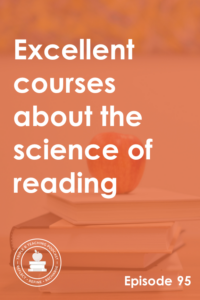
��
TRT Podcast #95: Excellent courses about the science of reading
If you’re looking for a streamlined way to learn more about the science of reading, check out these online courses that get my stamp of approval!
Listen to the episode here
��
Full episode transcript
Transcript
Download
New Tab
Hello! Anna Geiger here from The Measured Mom, and today, I want to share with you some excellent online courses that will help you as you learn more about the science of reading.
A few years ago, I switched from a balanced literacy approach to a more structured approach based on the things I was reading and learning. I continue to read and learn, and you can find a book list of all the books that I recommend on my website, which I'll link to in the show notes.
But something else that really helped me after I'd done my initial study was to take some online courses so I could really get the full picture, and I want to share those with you today. One course I took and recommend is called "The Science of Reading Short Course." It used to be from The Big Dippers, now it's part of Hill Learning Center, but I'll link to it in the show notes. It was really nice because it had some quality information in nicely structured format.
When I took the course, there were very few videos, if any at all, it was just a reading course. So I wouldn't want it to be the only course that I took. But it was only $100, which I thought was really affordable. The only issue is you only get access for six months, or at least that was the case when I took it, so I can't go back to it and tell you more about it. I've lost access, that's a bit of a bummer, but I would go ahead and check out that one. You can get a lot of helpful information for a pretty good price.
What's nice about it is you can really trust the people that helped develop this course. We've got the Reading Teacher's Top 10 Tools, which I'll talk to you about in a minute, The Right to Read Project, which is with Margaret Goldberg (she's been a guest on this podcast before), and the 95 Percent Group, which has excellent resources. So it's very trustworthy, and I like that it's self-paced and easy to access.
Another really good course is the "Online Elementary Reading Academy" from Core Learning. This is not cheap, it is expensive, currently, it's $650 per person. However, with that you do get the Teaching Reading Sourcebook, which is at least $70 or $80 by itself and worth that money. It's an amazing guidebook. I think the assessment book also came with this course. I own it, and I don't think I bought it separately. So this is really, really good, and especially because you have a teacher actually working with you. So you can't, I don't think, join at any time you want; you join for a period of time.
However, I checked and I still have access to the lessons. I'm not sure if you get lifetime access, but it's been a long time and I can still access those. It's definitely quality. It has some good videos, and you get some really nice supplementary material and support from an instructor. So that's another one to consider.
Another one I took was called "The Reading Teacher's Top 10 Tools" from Deb Glaser. She is amazing, a professor with a doctorate, has lots of good things to say, and is very knowledgeable. When I got it, it was only $25 a month, which was amazing because I only needed it for a few months, and then I was ready to be done with it. I would've liked it if I could have access forever because there are definitely things I'd like to go back and reread. However, that does get very expensive.
It's now part of "Tools 4 Reading" and the price has gone up quite a bit. It's $45 a month and $500 for the year. So it's really not affordable to have something that you access in the future whenever you want. However, there's really good information in it.
Another course I recommend is called "Keys to Beginning Reading," and that's from Joan Sedita of Keys to Literacy. She is fantastic, this course is great, and she's got videos and text. It comes with a printed book that's spiral-bound, very fat, and it's just a really good resource. As far as I can tell, when you join this course, you get access forever for as long as it's online. So you can go back and reread or get additional information whenever you want. So that's another really good one that I recommend.
Those four courses are the ones that I took to help me learn more about the science of reading and rethink my own course.
So I created a course about reading back in 2017 with my colleague Becky Spence of This Reading Mama. We had many, many teachers join the course and take it. But when we learned more about the science of reading, we closed it for a year so I could study everything and completely revamp all the lessons. Now you can trust that it is a science of reading-backed course, and it is open to the public twice a year. We're actually opening it on October 10th, 2022.
The cost of the course's regular price is $309. But when we open it for just a few days at the beginning, it's only $249 if you purchase in that first few days Make sure you're on the waitlist at teachingeveryreader.com, so you can catch that early bird price.
What makes our course different from many of the others that I've mentioned here is, number one, it's lifetime access. So for as long as it's online, you get access.
But number two, perhaps a bigger thing, is that it has lots and lots of printable resources for students, high quality printable resources that you're used to from This Reading Mama and The Measured Mom. These are resources that cover the big five: phonemic awareness, phonics, fluency, vocabulary, and comprehension. We also have a bonus module, which is all about teaching learners with dyslexia.
If you'd like to learn more about the course or just more about the science of reading, we recommend signing up for a free workshop that we're giving on October 10th of this year. We've given this workshop before, but feel free to sign up for a refresher. Or if you've never seen it, you should definitely join us! We're going to be giving it on Monday and Tuesday of next week, if you're listening to this in real time. It's called "Four Simple Ways to Bring the Science of Reading into K-2," and you can sign up for that at themeasuredmom.com/liveworkshop.
We have received and continue to receive so much incredible feedback from the thousands of teachers who have taken "Teaching Every Reader." Mari wrote this, "I think your 'Teaching Every Reader' course is so well-developed. It gives an overview, it dives deep, and, this is what makes it really special, it motivates further independent reading and study, which is so important for critical thinking."
In August Paula wrote this, "What an amazing course your 'Teaching Every Reader' is! I've been teaching for 29 years. I'm a certified special education and elementary education teacher. I learned so many useful strategies that I can't wait for school to start and for me to dive right in. The amount of amazing resources that I have been provided with is unbelievable!"
Ellen shared this email in August, "I just want to share, I completed my first year as a teacher last school year. As I get ready to start my second year, this course helped me incredibly. I feel so much more confident and educated about the process of learning to read, and I feel equipped to help my future students learn to read."
I keep all of this feedback in a folder in my email and I could go on and on, but I wanted to share those three, the three most recent that I've received, to help you know that there is so much goodness inside "Teaching Every Reader."
To get links to all the courses I've mentioned today, plus a link to the live workshop that we're giving on October 10th and 11th, plus a link to the course, which opens on October 10th, head to the show notes for this episode, themeasuredmom.com/episode95. Talk to you next time!
Scroll back to top
Sign up to receive email updates
Enter your name and email address below and I'll send you periodic updates about the podcast.
powered by
Related links
Recommended books about the science of reading
The Science of Reading Short Course – Big Dippers
The Online Elementary Reading Academy – CORE Learning
The Reading Teacher’s Top 10 Tools
Keys to Beginning Reading
Sign up for our webinar – October 10 & 11, 2022 HERE.
Get on the waitlist for my course, Teaching Every Reader
Join the waitlist for Teaching Every Reader.
The post Excellent courses about the science of reading appeared first on The Measured Mom.
Anna Geiger's Blog
- Anna Geiger's profile
- 1 follower



